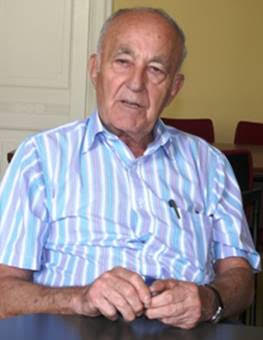
THE VOICE OF INTERNATIONAL LITHUANIA
|
VilNews has its own Google archive! Type a word in the above search box to find any article.
You can also follow us on Facebook. We have two different pages. Click to open and join.
|
Culture & events
- Posted by - (8) Comment
Oh, those old Lithuanian
wedding traditions

The article author, Kestutis Eidukonis, with the bride and her maids.
Marriage and death - these are the events to which ancient Lithuanian culture gave special attention to, and judging by the surviving customs and folklore, the most significant of these was the wedding, for it was on the family that the entire community depended on for survival, structure, and stability - not only of the community but of the whole nation. It is therefore understandable why the creation of a family - a wedding- receives so much attention in both ancient and present day Lithuanian culture.
One only needs to walk around old town Vilnius or Kaunas or any good size Lithuanian town on any given weekend to see wedding entourages accompanied by photographers posing for pictures at churches, bridges or any other landmark. These festivities occur everywhere in Lithuania. It is a wonderful sight for a country. It is usually a sign of confidence and hope in the future. Of course, traditions change and some people are reluctant to celebrate the wedding using some of these traditions but it was interesting to see them none the less and hope people continue to observe them.
I recently had the privilege of attending one of these special occasions in Žemaitiją in the wonderful towns of Veiverženai, and Švekšna I was invited to the wedding of Arturas and Žavinta, (her name means Enchanting) and I want to thank them and their families for sharing this beautiful experience with the me and the readers of VilNews.
At Žavinta's and Arturas's wedding, all the old traditions of a Lithuanian wedding came into play. All the actors, the matchmaker and his wife, the groom, the bride, the parents, bridesmaids, groomsmen, musician, large number of relatives and friends and most importantly, the children, had a part to play.
The day started at the bride's house with the bride getting dressed for the occasion being assisted by the brides maids. As the magic hour got close, the groom together with groomsmen arrived at the house, where, family and friends waited. The ceremonies began with the Matchmaker and Mrs Matchmaker (The matchmaker's wife) taking charge. The groomsmen are introduced to the bridesmaids. The boys tied flowers on the bridesmaids wrists and the girls in turn put a flower on the lapel of the boys. The future bride and groom in turn present a typical handwoven Lithuanian sash to the Matchmaker with the words Matchmaker - Liar.
The next part of the festivities was both comical and melancholic. The parents shared with everyone present their fondest memories of their children. Their first words, the lullabies they used to put them to sleep with and anything else memorable. The groom's mother then pinned a flower on her son's lapel, and in traditional Catholic families the couple is presented with a rosary as symbol of God's blessing. The bride and groom then bid farewell to their parents by kissing their hands. Tears flow copiously! Moms are usually very tearful - not so the fathers. Guests applaud and cry!
After this the couple proceed to the church where the mass is said and the couple exchange vows - pretty much like any other wedding ceremony. The couple also adopted the custom of releasing white turtle doves after the wedding ceremony outside the church.
After the church ceremonies the young couple along with their whole entourage hop into their cars and go on a noisy, horn blasting, few hour long trip. Photos are taken and rituals are performed. These combine a few old and new traditions - the old tradition consists of sorting through a bunch of stones labeled by the maid of honor with good and bad characteristics of the couple. Love jealousy, respect, hot temper, etc. The good stones are kept and put in a basket. The bad ones are tossed away. The stones have a special pagan significance - in old times they were considered messages to the gods. The newer tradition consists of locking two hearts together with a symbolic lock. The lock is often placed on a bridge and the key is discarded. Most Lithuanian bridges are covered with such locks. (I have also seen people removing their locks after a divorce or separation). The wedding party also uses this occasion to go visit close relatives who are ill or frail and could not make it to the festivities. The groom is also supposed to carry the bride across any and every bridge they come to.
Finally, according to old traditions it is time to go back to the house where the parents and the guests are eagerly awaiting. Weddings used to take place in one of parents' home. Now days, the celebrations are often held in a hall or in a place specially selected for its rural scenery or for the occasion. However, the decorations, like in the old days remain the same, the yard is decorated with birch branches flowers and other decorations. Our wedding took place in Alsė, a "kaimo sodyba" - a rural B & B.
After raising Cain on the roads and streets, the newly weds return to the hall where they are welcomed by their parents with the traditional gifts of bread and salt and water. (The bread symbolizes life, salt bitter moments and the water or wine to wash everything down) But before they are allowed to enter, they are required to undergo a variety of challenges. What would Lithuanian wedding be without jokes, and pranks? The organizer of all this is the irreplaceable wedding musician and the matchmakers who, up until the return of the young couple have been busy preparing for the first trials, an obstacle course for the groom to navigate while carrying his bride blindfolded - she is supposed to coach him where to walk. A baby doll for the bride to wash and diaper. Firewood for the groom to chop, a dish has to be broken and it will predict the number of children they will have, the bride will have to demonstrate that she knows how to peel potatoes. All this is accompanied with cat calls from the audience and commentary from the matchmakers as to how well or how ineptly the newly weds are performing their tasks. Upon completion of their tasks the newly weds request permission to enter the hall, but before the couple are allowed in they must get the approval of all the guests - who might want to challenge the couple. The maid of honor comes to the aid of the couple with a basket of candy and goodies to bribe the guests with. Many of the traditional matchmaker tasks have survived to this day but some are modified to fit the times. It is the matchmakers jobs to keep the evening flowing with toasts, songs, games and speeches. Everyone present is offered a chance to talk. The speeches have to be witty or sentimental, and they are always heartily applauded. The food was plentiful and delicious. Each table had official "bottle masters" and "happy attitude enforcers" assigned. The staff of the "Alsė" was great - pitchers were always full and platters of food just kept on coming. The place where the wedding took place was just outside the town of Švekšna it is a "Kaimo Turismo Sodyba" - a rural village garden type of an accommodation - with gazebos and other areas where guests young and old could socialize and imbibe. It also had places where everyone could rest, either in private rooms or communal bunk type accommodations. People with less stamina, were given semi-private accommodations - while the younger folks were provided with communal sleeping arrangements.
Around midnight - everyone was invited to a fire (normally a fireplace ) but in our case it was burning candles where everyone was asked to sprinkle amber dust on the flames and make a wish for the newly weds. Why Amber? Amber is considered to be the oldest, healing, spiritual rock with a large amount of organic energy. This magnetic stone, can still be found in the Baltic Sea, it is used for attracting love, carrying for and protecting happiness. It is symbolical invitation to an old Lithuanian ancestral spirit, to care for our young family and for our ancestors to reinforce the strength of the spirit of the family hearth fire. This magical fire now resides in Arturas and Zavinta and burns passionately within them.
The party continued till seven AM - With guests disappearing little by little till only the most energetic and hearty ones were left.
On the second day of the wedding - we were awakened by our colorful musician wearing a long wig. knocking on our door and insisting on us opening the door whilst he and his accordion serenaded us with his "wake up" song. Good natured threats were hurtled back and forth. Dire consequences were predicted for those who did not open up and wake up. Little by little, everyone woke up and gathered around for a breakfast of sour kraut soup served with potatoes and Kastynis ( A rich mix of butter and cream). This traditional hangover remedy , a visit to the sauna followed by a dip in the pond quickly revived everyone. The sauna and the dip in the pond was voluntary - though many took advantage of it.
Around noon - everyone was ready to start partying all over again. Everyone gathered at the banquet hall for second round of revelry. In the meantime, the bridal party decided that the matchmaker exaggerated the grooms qualities when he recommended the groom to the bride and her parents and that for being such a big liar, he needs to be strung up. The matchmaker at first tries to make excuses, but then when he sees that it is doing no good he starts to read his humorous last testament. This leaves everyone in stitches! The Matchmaker is than saved from hanging by the young bride - who ties her sash on him as a sign of respect and as sign of thanks for finding her a great husband. The wedding party goes along with the bride and decides that the matchmaker wasn't a liar, after all. He did match up these two wonderful young people and his services are still needed for the remaining large group of unmarried women. The matchmaker is allowed to live but now has to wear his matchmaker's sash around his neck as a reminder of the perils of his job.
Of course, there was still a lot of celebrating to do, games, dances and songs. The wedding went on till later that evening. But most importantly the Lithuanian Spirit was alive and well there. Happy guests, happy newly weds and most important of all - happy young eyes were watching all of this, for you see the young children were a part of this the whole time: This to them was a Fun Lithuanian Wedding!




- Bookmark :
- Digg
- del.icio.us
- Stumbleupon
- Redit it
- Posted by - (1) Comment
A new film, Land Of Songs, will show the Lithunian dainos (songs) as living, breathing stories, deeply rooted in their natural surroundings, daily routines, and rich histories.
Močiutės dainos
Land of Songs Director Aldona Watts with the močiutės: Stasė Bogušienė,
Jonė Dvareckienė, Marytė Klimavičienė, and Pranė Barysienė.
Hello and Sveiki!
My name is Aldona. I’m a Lithuanian-American multimedia producer from San Francisco, living and working in Brooklyn. This project has been a dream of mine for so long now that I’m thrilled to finally make it happen!
It all began seven years ago. My family and I visited Lithuanian friends in the village of Puvočiai, and they invited their neighbors, the močiutės (or "little grandmas"), over to sing for us. These močiutės, they told us, were the last generation in a long line of traditional folk singers with ancient roots.
At twilight we laid tables under the trees with food and drink. I barely noticed the faint sound of voices weaving through the forest, until they mounted to a loud front of song. And then I saw them: a small herd of hunched figures making their way towards us, their white headscarves bobbing through the trees.
The songs were at once melancholy and joyful; the hauntingly beautiful harmonies seemed from another world. After each song, the women’s wrinkled faces cracked into wide smiles, and the ghostly echo of the voices ringing through the trees was replaced by raucous cackling.
When it was time to say goodbye, the močiutės left as they came, singing all the way. Long after they disappeared, their voices remained.
At the time, my own beloved grandmother had recently passed away. She had been a master storyteller, and I was raised on her tales of survival as a teen fleeing war-torn Lithuania. My pain at losing her was compounded by the realization that I had also lost her stories. I felt I hadn’t done enough to carry on the oral tradition of my own family, and I wished that I had recorded her, when I had the chance.
So when I saw the močiutės sing that night, I resolved to one day make a feature documentary film about them. After seven years, and with a little help, I will finally be able to do this.
The Land Of Songs
Puvočiai is nestled deep in the forests of a region called Dainava or “The Land of Songs,” known for its rich tradition of folk singing called the daina. Ranging from the deeply personal to the profoundly political, the many-layered dainos are woven with the memories of the souls who have lived and died in these same forests for millennia.
Remnants of the ancient pagan past remain intact in many of the dainos, and great pains were taken to preserve them throughout modern history, even as Lithuania was pummelled by wave upon wave of war and occupation. Today, many of the younger generations are leaving the villages to seek work in the cities and abroad. In Puvočiai, for the first time in history, there is no one to carry on the oral tradition of the daina.
The Močiutės
Stasė Bogušienė (b. 1935), is an outspoken and vivacious ringleader.
Marytė Klimavičienė (b. 1942) has a tough demeanor and a great wit.
Pranė Barysienė (b. 1929) is soft-spoken with a sweet nature.
Jonė (“Jonukė”) Dvareckienė (b. 1931), the tiniest of the bunch, is nonetheless the strongest voice and often leads the others in song.
Marytė Bingelienė (b. 1931) has missed recent performances and gatherings due to serious health problems.
These five women are the last living members of a group that once numbered twelve friends and family. They started singing as girls, to lighten their load while mushroom-hunting in the forests. They sang at festivities, and they sang to remember the stories of their mothers and grandmothers. Perhaps most importantly, their “siren songs” perked the ears of young men in neighboring villages. When war and repeated occupations left half the village burned to the ground, the women sang to rally their strength and ease their pain. An entire history of a nation in turmoil is chronicled in their dainos.
The Film
The objective of this film is not only to preserve the precious dainos of the močiutės - transcriptions and recordings can be found in archives throughout the country. Land Of Songs will be unique in that it will show the dainos as living, breathing stories, deeply rooted in their natural surroundings, daily routines, and rich histories. Shot in an observational style, Land Of Songs will be multilayered and poetic, like the dainos themselves.
We plan to shoot next month and finish the film this fall.
Director / Producer / Cinematographer: Aldona Watts
Local Producers: Kęstutis Nėnius, Danguolė Nėniuvienė, Ingrida Nėniuvienė, Motiejus Nėnius
Producer / Production Sound Mixer: Julian Watts
Producer: Matthew Shorr
Local Production Coordinator: Algimantas Kazlauskas
Sound Design: Aldona Watts in collaboration with Kyle Keays Hagerman
Land Of Songs is a true labor of love, and its success relies on friends, collaborators, and community members who are willing to help out in any way they can. I am keeping the budget as tight as possible, but I know that the story I have to tell is priceless. I also know that it has to be told now, before it’s too late.
How Kickstarter works: You can make a commitment to contribute, and you will not be charged until the deadline. If the goal is not met by the deadline, you will not be charged at all. It’s all or nothing.
Any and all funds raised will go towards production costs: video and audio equipment, travel expenses, compensating the local crew, Kickstarter fees, and Amazon processing fees.
You can also help by simply spreading the word about Land Of Songs!
www.facebook.com/landofsongs
www.twitter.com/landofsongs
www.landofsongs.com
Please contact me with any questions you may have.
Thank you and labai ačiū.
Aldona
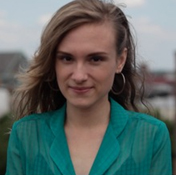
About Aldona Watts:
Aldona Watts is a multimedia producer living in Brooklyn, New York. She graduated from New York University, and has since produced several audio documentaries. She currently manages and produces GRYC Radio, a youth radio station in Queens, and is the host/producer/engineer/DJ of a long-running weekly radio show broadcasting in New York City
- Bookmark :
- Digg
- del.icio.us
- Stumbleupon
- Redit it
- Posted by - (1) Comment
By the end of the book, author Daiva Markelis discovers
Her own way to be both
Lithuanian and American.
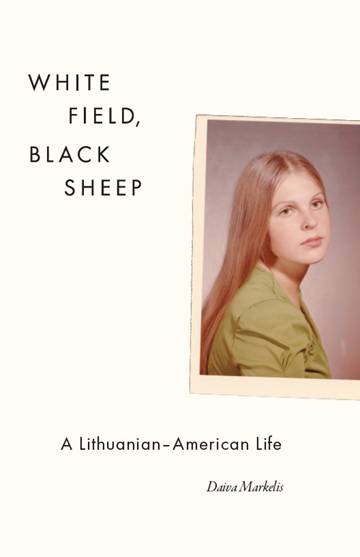
Daiva Markelis interviewed by Ellen Cassedy
Daiva Markelis's memoir, White Field, Black Sheep: A Lithuanian-American Life (University of Chicago Press, 2010), tells the story of her growing up as the daughter of postwar Lithuanian immigrants in the 1960's and '70's near Chicago.
The book alternates between the story of Markelis's youth – especially her struggle for cultural identity – and a series of touching later scenes with her octogenarian mother.
We see Daiva and her sister begging for real American Halloween costumes and a plastic Christmas tree, while the parents insist on speaking Lithuanian and holding true to their traditions. The descriptions of Catholic school, Lithuanian scout camp, and the family resort owned by Valdas Adamkus (who later returned to Lithuania and became its president) are tart and funny.
Markelis reveals a culture as well as a personal history. She writes affectionately about the streets, the buildings, even the tackiest billboards of her home town - while, at the same time, not shrinking from frank portrayals of racial tension and alcohol abuse. The portraits of her parents are filled with a lovely tenderness, even as she pokes fun and reveals some of their failings.
This tale of seeking cultural identity within an immigrant community comes to an uplifting conclusion. By the end of the book, Markelis has discovered her own way to be both Lithuanian and American.
Daiva, the title of your book comes from a riddle that your father posed to you when you were a child:
Black sheep on a white field;
He who knows them, leads them.
The answer is "letters on a page." You are truly a "shepherd of words" – an eloquent, elegant writer. Your love of both languages shines throughout your memoir.
Thanks for the kind words, Ellen. I'm going to start listing "shepherd" as my occupation!
I've always thought being bilingual is an advantage in so many ways. Growing up in a heavily Lithuanian culture and speaking Lithuanian as my first language have given me a different lens through which to observe American life. This has enriched me as a writer and as a human being.
My parents encouraged reading, both in Lithuanian and in English, and that has probably had the biggest impact in my wanting to be a writer and a teacher of literature.
A particularly touching part of the book, for me, was the brief section called "The Alphabet of Silence." You describe how, near the end of your mother's life, she presented you with a set of silverware that had been given to her family for safekeeping by a Jewish doctor, who then perished in the Holocaust.
You challenge your mother, asking why the fate of Lithuania's Jews was not mentioned in the community when you were growing up. On the verge of tears, she asks you to reassure her that she was a good mother.
Your handling of this scene is so subtle and beautiful that I'm reluctant to ask you to say more. But can you? Is such a conversation between mother and daughter a common one in Lithuanian-American homes?
I'm so glad you liked this section, Ellen. I wanted to write more about the many silences I experienced growing up in a Lithuanian household, but I wasn't sure how to go about this. I didn't want to alienate Lithuanian readers, many of whom are still reluctant to discuss what happened during the Nazi occupation of Lithuania. In retrospect I think I was being too subtle.
I was very close to my mother. We had many interesting conversations about a variety of topics – religion, politics, even sex. I think many Lithuanian-American daughters are close to their mothers – sometimes I think our mothers felt a bit lonely and misunderstood, and thus turned to their daughters for companionship. Of course, I thought my mother was special. She was a very outspoken, funny, and intelligent woman.
How has the book been received within the Lithuanian-American community? How do you respond to people who worry that you've shown too much dirty Lithuanian-American laundry in public?
I've received many letters, emails, and phone calls from Lithuanian-Americans saying how much they loved the book. I really wasn't expecting that! The most positive responses have come from individuals my age who grew up in Chicago or Cicero, thanking me for writing a memoir that chronicles experiences they've gone through with parental expectations, Lithuanian Saturday School, and even drinking at the bars on 69th Street in Marquette Park.
Lithuanian-Americans from an earlier generation--those whose grandparents immigrated to this country at the turn of the last century--also seem to like the book. Friends tell me that some Lithuanians are angry that I emphasize drinking so much. But I wrote what I observed and lived through, and drinking was a part of that. As I grow older I care less about what people think--I tell my students that a growing indifference to the judgments of others is one of the advantages of aging.
Also, the idea of "dirty laundry" is, to some extent, subjective. I'm sure that some Lithuanians feel I've revealed too much. Yet one friend said that I held myself back too much. And non-Lithuanian friends and critics who've read my book have remarked on how strongly the emphasis on education and culture in Lithuanian life comes through.
Books about the Lithuanian-American experience are few and far between. Why do you think this is?
There aren't that many of us out there, at least compared to the Poles, who've written much more widely about their experiences as immigrants and children of immigrants. Also, Lithuanian-Americans of my parents' generation encouraged their children to go into practical fields such as engineering and nursing. Perhaps surprisingly – because there are fewer of them – Lithuanian-Canadians have led the literary way. Antanas Sileika's first novel, Buying on Time, is a wonderful and very funny book about growing up Lithuanian-Canadian. And Irene Guilford's The Embrace examines the complex relationships between Lithuanians in the homeland and the diaspora. Both authors have influenced my own writing.
|
|
ELLEN CASSEDY Ellen Cassedy traces her Jewish family roots to Rokiskis and Siauliai. Her new book, We Are Here: Memories of the Lithuanian Holocaust, was published in March and will appear in Lithuanian soon. She lives in Washington, D.C. Visit her website at www.ellencassedy.com.
|
|
|
DAIVA MARKELIS Born in 1957 in Chicago to Lithuanian immigrant parents and raised in Cicero, Daiva Markelis has found unexpected contentment amidst the cornfields of Central Illinois. She is an associate professor of English at Eastern Illinois University, where she teaches creative writing, composition and rhetoric, women’s memoir, and myth and culture. She is a cofounder of Past/Forward, a memoir-writing group open to the public that meets twice a month and consists of ordinary people, many of them retired, writing moving, insightful, often humorous life stories. |
|
Daiva received her doctorate from the University of Illinois at Chicago in Language, Literacy, and Rhetoric. Her dissertation deals with the literacy habits and oral traditions of Lithuanian immigrants; chapters have been published in the journals Written Communication and Lituanus, and in the edited volumes Ethnolinguistic Chicago and Letters across Borders: The Epistolary Practices of International Migrants. Daiva has presented her research at the Modern Language Association, the Conference on College Composition and Communication, the Association for the Advancement of Baltic Studies, and the National Council of Teachers of English. She has also written several academic papers in her native Lithuanian.
Her master’s degree is in English with a specialization in creative writing, also from the University of Illinois at Chicago. Daiva’s short stories have been published in Cream City Review and Other Voices. Her creative nonfiction has appeared in The Chicago Tribune Sunday Magazine, The Chicago Reader, Crab Orchard Review, Writing on the Edge, Women and Language, Mattoid, Agora, and Fourth River. Mongrel Tongue was a finalist in the 2007 Arts and Letters competition in creative nonfiction. The Lithuanian Dictionary of Depression was a runner-up in the 2009 American Literary Review creative nonfiction contest. The Review published the essay in its Spring 2010 issue.
Daiva cheers for the White Sox. She loves to knit, scrap-book, read, and listen to music, everything from Bach, Beethoven, and Brahms to bebop, bluegrass, Brel, the Band, and the Black Eyed Peas. Her favorite color is red, her spirit animal is a polar bear, her astrological sign is Capricorn. She wants a puppy for Christmas.
|
|
- Bookmark :
- Digg
- del.icio.us
- Stumbleupon
- Redit it
- Posted by - (0) Comment
Letter from our VilNews’ Washington correspondent:

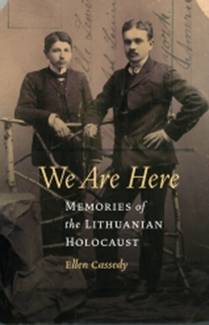
It was a pleasure meeting readers, librarians, booksellers, bloggers, and publishers’ reps at BookExpo America in New York City last week. I was honored to be among the 700+ authors signing books at the largest book trade gathering in the U.S. Here I am with Donna Shear, director of the University of Nebraska Press, my wonderful publisher.
A special treat was seeing Susan Nussbaum accept the Bellwether Prize for social engaged fiction from Barbara Kingsolver. Another highlight was visiting the Read Russia booth to chat about a possible Russian translation of We Are Here. And then there was the once-in-a-lifetime chance to pose with Olivia the Pig.
For more details, visit my website. Mark your calendar – we’d love to see you there!
Praise for We Are Here
“Pioneering… will reach out to Jews, Lithuanians, and all those who care about not replaying in this new century the disasters of the century that has just ended"
Michael Steinlauf
“…deeply moving…her book offers a unique perspective…complex human texture, rooted in an oft-forgotten Yiddish cultural context, a tapestry of events which elsewhere too often appear as one-dimensional. Readers will doubtless be immensely enriched by her experience.”
Dr. Saulius Suziedelis
- Bookmark :
- Digg
- del.icio.us
- Stumbleupon
- Redit it
- Posted by - (0) Comment
Ars longa, vita brevis
Art is long, Life is short.
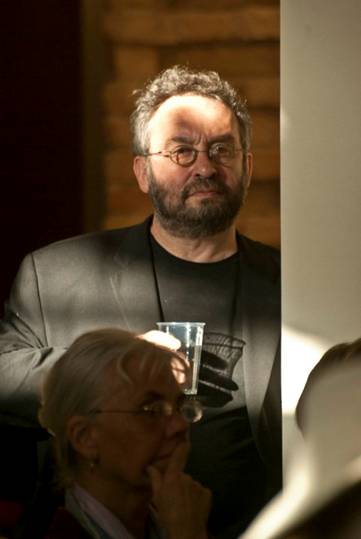
Professor of Creative Writing and American Short Story at Concordia University, Canada,
the founder and main organizer of the SLS, and author Mikhail Iossel.
Photo: Kestutis Pleita
Professor Mikhail Iossel interviewed by Eglė Kačkutė
This summer, July 15-28 and August 29-12, the 14th edition of Summer Literary Festivals known as the SLS will be held in Vilnius for the 3rd time running. Literary workshops will be conducted by experienced and well known North American writers; famous photographers, artists and researchers will be taking part in the program. SLS is the biggest independent creative writing program in the world that brings together an impressive number of talented teachers and writers to be. The creative writing phenomenon is rife in Europe, too. The first British Creative Writing course graduate in the UK is legendary Ian McEwan who continues to reap the plentiful fruit of his studies at East Anglia University thirty odd years ago. Creative studies are known to be more that just a means to get better at writing, they also serve as an initiation into complex and competitive world of publishing, providing writers to be with much needed references.
Eglė Kačkutė is talking to professor of Creative Writing and American Short Story at Concordia University, Canada, the founder and main organizer of the SLS, and author Mikhail Iossel.
This year for the fourteenth time running, you’ll be organizing the biggest international creative writing program featuring North American and Canadian writers. You teach creative writing at Concordia University and are a writer yourself. What’s your story? How did you come to writing in English and especially teaching writing in English?
I came to the US in 1986, after five years of having my application for émigré visa turned down by the competent organs. Back in Leningrad, which is where I was born and raised, I was trained and for a few years worked (poorly and lackadaisically) as an electrical engineer, in the employ of the research institute charged with the task of lowering the electromagnetic fields radiated in the ocean by the outmoded Soviet submarines, so as to make the latter less detectable by the enemy radars (it was a hopeless enterprise, of course); and I also – especially since the beginning of the 80s -- was active in the city’s burgeoning underground (“samizdat”) literary community.
(Once I had become a “refusenik,” however, my line of occupation had changed quite drastically, and for the last couple of years of my “Soviet” life I worked as an alternate night-guard at Leningrad’s Central Park of Culture and Leisure, tasked with the responsibility of keeping an eye on the city’s only roller-coaster. I loved that job.)
My original “Plan-A” idea, before arriving in America, had been to make a living in the new world by continuing to write in Russian; and when, within the first day or two of my post-Soviet life, it was explained to me how and why that wouldn’t work, I found myself at a loss as to what to do next, for I had no Plan B. One thing I did know for certain, though: I didn’t want to be an engineer again – and in general, I had resolved for myself never to try and make a living by doing anything that, to me, felt like a waste of life.
I could read English well enough, at that point – back in Leningrad, I had translated some contemporary American prose and poetry for “samizdat” journals, including the one I co-published myself – and my spoken English was rather passable; but my oral comprehension, in the absence of any prior practice, was pretty abysmal, not to mention my ability to write in English, which was non-existent, for all intents and purposes.
In an effort to improve the quality of my English quickly – and because the idea of being surrounded by books was soothing and appealing to me, in my discombobulated state just then – I undertook a string of part-time jobs with some terrific bookstores: first around the Harvard Square and other parts of larger-Boston area – and then in Northern California, where my relatives on my father’s side lived.
Unfortunately, I was unable to keep any of those jobs for long. I was, at that point -- not atypically for many Soviet émigrés in those days (when one left the country, and one’s friends and family, forever, in the firm knowledge he would never be able to go back and see them again) -- in a fairly sorry state of mind and spirit: confused, depressed; in a word, sick. I had no clear personal strategy for survival. It was purely a day-by-day kind of existence.
I watched television for hours on end, cooped up in my tiny, overheated sixth-floor, rooftop room on the outskirts of Boston, in a large rambling walk-up apartment owned by a Russian émigré, where seven or eight other people (mostly, from Columbia, for some reason) lived; but my old, rabbit-ears TV, which I’d found on sitting on the sidewalk one day, only allowed me to watch one channel -- and it was the Boston Celtics, basketball channel. So I was mainly learning the basketball-related part of the language.
At some point during those months, in order to distract myself from the sheer uncertainty and sadness of my circumstances, sleepless and homebound and unemployable, I started trying to write sentences in English. Not stories, at that point, just yet – just the competent, authentic-looking sentences. It was, at first, a purely mechanical, self-therapeutic exercise: putting together the small blocks of short, direct sentences, one after another. It was indeed a comforting exercise for me: I was overwhelmed with nostalgia, you see, and my native language, Russian, would not allow me to write about my life objectively and dispassionately, with any degree of calm remove, for it was as natural to me as the very air I breathed and therefore offered no resistance in the process of writing; and as soon as I started writing in Russian, I immediately succumbed to sadness and depression and commenced to wallow in misery and self-pity. The very foreignness of a foreign language – English – afforded me the distance I needed to put between myself and my own life, my present circumstances and my memories. A foreign language one knows well enough to know he doesn’t know it well serve as a natur4al obstacle every writer needs to come up with for the purposes of his or her writing. I could not wax emotional in English, could not feel sorry for myself, could not write soulfully and beautifully about my nostalgia, about the friends I would never see again. I could do nothing but be adequate to the words I was trying to put on paper. English, then, served as a sort of Plexiglas wall standing between myself and my past, my very life. I only could be adequate, as I said, to any English sentence at hand.
One sentence, then another one, and another and soon enough, you have a paragraph. Then another paragraph, and then another. Every sentence had to make direct narrative sense, and every single paragraph had to work towards the telling of the story under writing. It was like walking a narrow path through the swampland: you don’t want to deviate from it at any point, or else you’ll get bogged down without a trace.
Incidentally, and a propos of what I am describing right now: when Samuel Beckett – perhaps the most linguistically gifted and prodigiously verbose (in his youth) writer in all of the 20th-century literature, was asked why, at the age of 46, he switched to writing in French (a language he was not perfect in)< he replied: “I know too many words in English.”
So it went. By that point – early 1987 – a friend at one of those bookstores I’d worked at had told me about the phenomenon of graduate creative writing programs in the US: you could apply there and, if accepted, you would get two year’s worth of time unobstructed by any other practical worries and considerations; they’d give you a place to live, if they liked your writing, and they might even waive your tuition, or you could apply for a student loan. All you had to do there was write.
So I applied to one of those programs – at the University of New Hampshire – and I was subsequently accepted, even despite the fact that I had not a single story in English finished by that time.
The rest was more or less clear sailing: I kept on writing in English, gradually getting better at it (as you get better at anything you do stubbornly and consistently and with passion); and eventually, one story got accepted for publication in a literary journal, and then another – and I was on my way, by and large.
Within a few months, an editor with a large publishing house had contacted me and asked if I might have enough stories for a collection, so I told her I’d have the needed number of stories by the time she needed them.¨
In due time, the book of my stories got published, I went to Stanford University on a post-graduate writing fellowship (the Wallace Stegner Fellowship); then I applied for a teaching job at the University of Minnesota, where there was an opening; I was hired by it for a two-year stint. Then I was lucky enough to have been awarded the prestigious Guggenheim fellowship in writing, which indeed is a coveted distinction to get, and one that makes getting jobs easier. I subsequently went on to teach at a number of colleges and universities, in the graduate and undergraduate writing programs (New York University, St. Lawrence University, Union College), before settling permanently in Montreal, which is home now.
That’s the whole story, in a nutshell.
As an émigré and especially as a native Russian language speaker writing in English you probably have to do a lot of cultural translation and adapting from one culture to another. How do you go about it? How do you feel about it?
I don’t think I do much of any such translation anymore, be it in the metaphoric or literal sense. (This, quite apart from the fact that the two languages are not compatible enough structurally to lend themselves easily to the process of instantaneous translation by the translation engine of one’s mind. To me, the oft-asked question, “What language do you think in?” – doesn’t really make much sense, since I don’t really think in words, as most people do not, either. The language of thought is separate from the language of words, thought made word.) I believe -- which is to say, I feel – I have found a place of balance for myself -- or rather, the process of my life itself has found such a place of psychological and intellectual balance for me.
I may, fancifully speaking, be suspended between two worlds, the old and the new one: the world of my past and that of my present, with one foot planted in the present and one in the past; and the past, of course, is also the present.
I feel that my first several years in the new world, which were quite hard and difficult, filled with doubt and nostalgia and despair – those were the years when this process of dividing myself into two selves was taking place. Which, basically, may be a way of me saying that there are two people cohabitating inside me: one belonging in the world of Russia, the other -- citizen of the larger, broader world.
I am very plugged in to the current developments in Russia, I follow them closely, I spend quite a bit of time every day on the Russian websites, I read the new literary publications in Russia, I speak to some very close friends from Russia, both living there and abroad; I still feel that Russia is home for me, in some esoteric way: and when I’m back in Russia, I understand the code of people’s living there, I feel that I belong there – although I no longer live and could never live there again. But my life’s center of gravity has long shifted towards the broader, larger world of my post-Soviet existence, my home is the world outside Russia. I am a citizen of the US and a permanent resident of Canada, but I feel that I live in a larger world than just that of North America.
That having been said, I am a professor of English who teaches the university-level creative writing and American short story; I read lots of contemporary American literature (albeit not as much as I would like perhaps), as well as my students and other young writers’ stories – hundreds of stories every year. Somehow, I manage to stay in one piece and not feel torn or conflicted within my own head and my own heart – but, again, this did not happen quickly or easily; as nothing really good ever happens in life quickly and easily, without some serious work one does, often unbeknownst to himself, to prepare himself for the kind of life that he feels makes sense.
Who are the star participants among this year’s faculty members?
All of them are stars in my book, as well as by the lights of great many readers in north America and abroad – although not in the same sense or scope as, say, Brad Pitt or Jennifer Lopez or the authors of mega-bestsellers on The New York Times bestseller list are stars. The literary world, at least in North America, is not about starship – there’re not enough readers of serious literature in modern world to make them stars in the commonplace meaning of the term – but it is, rather, about being consistently interesting and thoughtful and contemporary and doing meaningful things with one’s writing, charting new literary routes, taking reader to the place where serious questions about the serious life’s issues get asked… and not necessarily answered, because life itself is an open-ended proposition, with no ready-made answers or recipes for happiness on the offer.
One of the great advantages of being an independent literary program run by writers is that we’re free in our choice of invited faculty. Over the fourteen years of SLS’s existence, we’ve brought to our programs the veritable Who’s Who of the North American and international letters: people who are innately curious about the different paradigms of life in various places and who – although they easily could afford to come to those places on their own – Russia, Lithuania, Kenya -- wouldn’t be content with status of the mere tourists, which they inevitably would be without the familiarity with and immersion in the local literary and arts scene.
Another very distinct feature of SLS separating it from any other program of its kind: we draw no dividing lines between the well-known, famous and accomplished writers on the faculty -- and the beginning writers constituting the bulk of the program participants. Everyone’s in the same boat on the SLS programs; everyone’s in on the same type of discovery. Our programs are about shifting and accelerating the paradigm of one’s literary practice, and so we put people in highly unfamiliar (although on the surface recognizable) settings – and everyone is lost there in the company of other writers; everyone is lost within a findable context. Everyone is brought together by the pressure of the sheer strangeness, unfamiliarity of the surroundings. A very famous writer therefore can drink beer till two in the morning in the company of twenty-year-old undergraduate students of creative writing and talk to them as equals about literature… or whatever else people talk about at two in the morning while drinking beer Writing is an enterprise where the rank has no meaning. A famous writer is nothing but yesterday’s novice. Over the course of my teaching career, I’ve seen enough talented but not necessarily hard-working people, and enough not too brightly gifted (on the surface) yet extremely ambitious and serious and diligent your writers, to know that in writing, dedication to the process and practice of literature inevitably trumps the bright but sometimes shallow flame of natural talent. Talent is not always to be found on the surface of one’s early writing. People come into the possession of their talent, their true literary voices, over the long period of hard work.
This is the third time that you run the program in Vilnius. Why?
I am very glad we’re holding SLS programs in Lithuania now,. The idea to open one came after we had decided to suspend our sessions in St. Petersburg, which we ran for 10 years straight and brought roughly a thousand students to the city on the Neva. The constraints of available space would preclude me at this point from talking about the reasons why I’ve always found Lithuania fascinating – going back to the early years of my Soviet adolescence. But those reasons were indeed numerous, and memorable.
So I decided to see if we could hold a program in a place which, unlike St. Petersburg, Russia, is not that easily and readily recognizable to the North American literary community; does not hold the same kind of raw mystique perhaps that Russia possesses – not to mention Kenya, which is the site of another one of our long-running programs.
Lithuania, of course, is the geographic heart of Europe – but more than that, it is the spot where the tectonic plates of European history have clashed over the centuries, and currently are clashing as well; it is a place of transition from the old, divided Europe, to the new, unified yet still painfully unequal one.
To me, of course, it matters a great deal that this is a post-Soviet space – and of course, and very meaningfully, it is of essential importance to me that Lithuania was the place of the greatest concentration of Jewish people in Europe relative to the native population, for centuries and immediately prior to the WWII, and then became the site of the greatest tragedy in the history of the Jewish people. My ancestry, originally, is from the larger Litvak area: Belarussian border with Lithuania, and Latvia. There is a large agglomeration of factor that have caused me to want to hold the program here, both personal and intensely objective ones
One of the aims of the program is to set in motion a cultural, literary and, most importantly, creative exchange between the visiting established authors and writers to be and the local literary community. Based on previous SLS Vilnius, how does that work, does that collaboration bare any fruit?
We’re working on it. SLS, basically, over the years, without setting this as a major goal expressly, has positioned itself as a moveable platform of sorts upon which the North American and the international literary communities can meet. Over time, we have had lots of former SLS participants collaborating on literary projects with their counterparts from Russia and Kenya and Canada; and we‘re intent on seeing the same happen in the case of the Lithuanian literary community. There have already been some poetry translations of contemporary Lithuanian poetry done by our program participants, on a fairly significant scale, and some work already has been published. We’re looking to expand that effort further still, and on a considerable scale. We are bringing to Lithuania some of the leading publishing-house and literary-magazine editors, who always are interested in discovering the new voices from a variety of places. Ask me the same question in a year: after all, we have only just started our program in Lithuania: three years is a short time. Ars longa, vita brevis.
- Bookmark :
- Digg
- del.icio.us
- Stumbleupon
- Redit it
- Posted by - (0) Comment
The medals of
Petras Rimsa
Lithuanian medallic art is an especially interesting area of study in the numismatic hobby. Individual medals struck by various persons or groups convey the specifics of the history of Lithuania and its people.
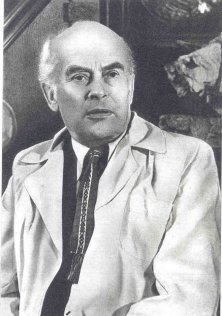
Petras Rimsa in 1957
|
By Frank Passic, Albion, Michigan Lithuania’s most outstanding medalist was sculptor Petras Rimsa (1881-1961), a contemporary of Germany’s medalist Karl Goetz. Many of Rimsa’s designs reflect Lithuania’s patriotic themes and range from religious subject matter to sarcastic political commentary. Since the reestablishment of Lithuanian independence in the 1990s, Rimsa’s medals have again become popular and highly sought after by Lithuanian collectors. To meet the demand, there are even contemporary reproductions of Rimsa’s early 20th century medals. Petras Rimsa was born November 11, 1881, in the Lithuanian village of Naudziai. His parents were farmers of the Suvalkai Province under Czarist rule, and in this rural setting young Petras aspired to be an artist. He was especially talented and showed a marked tendency for work that required skill, accuracy and patience. As a young boy he spent much of his leisure time whittling and decorating household articles and farm implements. Before long he had acquired the name of “Master” in his village in recognition of his artistic work. At the age of 17, Petras left his village for Warsaw, Poland, to study art under the tutelage of Polish sculpture Welonski. He then traveled to France to further study at the Ecole des Beaux Arts under Professor Antoin Mercie. After completing his courses there, Rimsa traveled to various European centers of art and culture, continually increasing his knowledge and skill.
Upon his return to Lithuania in 1906, Rimsa immersed himself in local Lithuanian cultural activities, helped to establish the Lithuanian Art Association and participated in the first Lithuanian Art Exhibit in 1907. Here he exhibited his most famous sculptural work, “The Lithuanian School,” (also known as the “School of Misery”) which received much critical acclaim. This masterpiece represents the Lithuanian school between the years 1864 and 1904 when the Russian government placed the strictest ban on Lithuanian literature. The sculpture shows a mother secretly teaching her child the Lithuanian language. The alert and watchful dog beside the child shows the constant fear with which the school operated. In 1993 the Bank of Lithuania illustrated Rimsa’s “Lithuanian School” on the back side of the 5 litai banknote designed by artist Gedrius Jonaitis and printed by the Thomas De La Rue printing company. Ironically, Rimsa had submitted sketches to the Bank of Lithuania for a proposed 50 litas banknote design during the 1920s in which he illustrated the “Lithuanian School” on the face. That design however was rejected at the time by bank officials.
P-55 1993 Lithuania 5 Litas banknote back side featuring the “Lithuanian School.”
In 1907 Rimsa exhibited his other famous work, Artojas (The Ploughman) which expressed Lithuania’s utter misery under Russian occupation. The piece depicts the ploughman with his beast of burden and the plough made by his own hands as they together force the hard and weedy soil to yield a crop. The Ploughman associated Rimsa’s name with Lithuania’s struggle for national independence. In 1911, the Russian Imperial Society of Arts awarded him a large cash prize for this work. Rimsa’s work THE PLOUGHMAN, created in 1922, graphically depicts the country’s misery under Russian occupation.
The outbreak of World War I brought severe hardships to Rimsa and his countrymen, and Rimsa was forced to labor in munitions factories and as a merchant. After Lithuanian independence was restored in 1918, he returned to his home in the Lithuanian capital of Vilnius and continued his artwork.
Petras Rimsa in the 1920s
His return to Vilnius, however, was short-lived. In 1920 the military invasion of Lithuania by Poland and occupation of Vilnius by Polish troops forced Rimsa to flee the city. His studio was lost and a lasting bitterness about the situation was implanted, a passion that was later reflected in his medallic work. After losing his studio in Vilnius, Rimsa journeyed to Berlin and other European cities. He finally returned to Lithuania and made his home in Kaunas, the temporary capital of the country.
The portion of Lithuania occupied by Poland 1920-1939. Accordingly, when the subject of the Polish occupation of Lithuania’s capital came up in conversation, Rimsa suddenly became very eloquent and spoke as an expert on the subject. Rimsa toured the United States in 1936 and 1937, exhibiting his works in Boston, Chicago, Cleveland, Detroit, Pittsburg, New York and other cities. Critics marveled at his artistic abilities. Paul Bird of The Art Digest commented, “An artist of unusual graphic power, he also produces ornate linear sculptures, decorated from head to foot with fantastic designs.” Carlyle Burrows of the New York Herald Tribune wrote, “Medals like these celebrating the Congress of Vilnius, and the establishment of the first ecclesiastical province of Lithuania are forcefully modeled in their essential details, while showing meticulous elaboration of the backgrounds.” Eleanor Jewett of the Chicago Daily Tribune remarked, “There seems, in fact, no end to the genius of this artist. He cannot be classified as a modern or non-modern, but ranks with the unticketed immortals.” In the introduction to the official programs at the exhibition held at the International Institute in Boston, January 30 through February 12, 1937, the Consul General of Lithuania, Jonas Budrys, remarked: “Petras Rimsa is one of the most prominent sculptors of Lithuania. His creations are valued very highly not only in Lithuania, but also elsewhere. They portray the spirit of national Lithuanian art, they carry one into the realms of the unknown, unexplored futurism...His numerous medallions disclose the finesse of an accomplished artist. In appreciation of this recognition, and in appreciation of the talents of the sculptor, we offer this exhibit to art lovers, and we hope that it will tend to bring the American public closer to Lithuanian talents, and to the Lithuanian people as a whole.” 1 Rimsa’s success in the United States was due largely to the efforts of the noted Lithuanian-American numismatist, Dr. Alexander M. Rackus (1893-1965). An avid collector, Rackus belonged to the American Numismatist Association and wrote numerous articles for the Numismatist in the 1920s and 1930s. In his recollections, Rimsa remarked:
Dr. Aleksandras M. Rackus (1893-1965) “Aleksandras Rackus was the first collector with such a strong passion that I had met and knew. Of course, he had set his heart on my medals. They were items which, if was said, could be shown anywhere in the world. And Dr. Rackus took my medals to coin shows everywhere in the world. They were discussed quite often in American numismatic conventions. And it was worthwhile ... My medals apparently attracted the notice of Americans. Rackus wrote, “Visitors to numismatic shows, passing indifferently by other exhibits, would always stop at those cases in which were displayed Petras Rimsa medals, and enjoying themselves would remain by the half-hour.” Even American sculptors eyed them approvingly. As an example, the sculptor-medalist J. Henris Ripstra wrote me on April 18, 1931, as follows: “I recently viewed your medal collection, exhibited by Dr. Al. Rackus as the Chicago Coin Club. They pleased me very much, and I congratulate you upon your style and technique. If possible, I would like to acquire a collection of those medals.” And thus my medals found their way into the world.” 2 Following World War II, Rimsa stayed in Soviet-occupied Lithuania, where the communists gave him a large studio to replace his cramped one in Kaunas. Rimsa continued to illustrate books, write and design medals. Unhappy with the Soviet system, he frequently refused work in his later years, officially blaming his “old age,” as his personal letters to the West revealed. Rimsa died in Vilnius on October 2, 1961. His recollections were published in 1964, Rimsa’s pre-World War II medals were struck by Huguenin Freres & Company of Le Locle, Switzerland. This firm also manufactured Lithuanian military orders and decorations. Rimsa’s medals were struck in bronze, in various sizes of 100, 75, 60, 35 and 25 millimeters in diameter. Personal editions presented to close friends or dignitaries were often of silver or gold wash, and Huguenin Freres & Company customarily presented Rimsa with a 150-gram gold striking of each of his designs. On a personal note, in 1979, this writer was able to view various Rimsa medals on public display inside the “Stained Glass Museum” (The Church of Saint Michael the Archangel) in Kaunas, during my visit to Soviet-occupied Lithuania. I was also able to view Rimsa medals in private collections. Later I learned that my maternal great-grandmother was a Rimsa, although probably not related to the sculptor. Although I have only been able to obtain just a couple of his medals for my collection, I have still been fascinated about the details found on these medals, and the diversity of themes that the sculptor tackled. In May, 1983 the American Numismatic Association published my listing of Rimsa medals in their magazine The Numismatist. A close-up of the Congress of Vilnius medal was featured on the front cover. Cover of The Numismatist, May 1983 featuring Petras Rimsa medal detail.
The following is a listing and description of the medals of the famous Lithuanian medalist, Petras Rimsa. 1. Vilnius, Capital of Lithuania This medal commemorates the 600th anniversary of the founding of the Lithuanian capital city of Vilnius. The anniversary occurred in 1923 when the city was under Polish occupation. VILNIUS, CAPITAL OF LITHUANIA Known Mintages: 35 centimeter medal, private issue, only a few struck; 75-millimeter medal—300 struck; 20 100mm personal specimens cast in bronze. Obverse: Featured is Grand Duke Gediminas, dressed in chain mail and holding a downward pointing sword in his right hand. On his left shoulder is a decorative mask of a lion’s head, symbolic of Gediminas reputation as the “Lithuanian Lion.” Gediminas began the dynasty of Lithuanian rules that lasted almost 300 years. Ruling from 1316 to 1341, Gediminas completed the unification of the Lithuanian tribes and expanded the territory of the nation. The inscription reads GEDIMINAS DIDYSIS LIETUVOS KUNIGAIKSTIS MCCCXVI-MCCCXLI, which translates “Gediminas the Great, Grand Duke of Lithuania 1316-1341.” Reverse: Shown is Gediminas castle, the ruins of which are still found in Vilnius today. The inscription reads VILNIUS LIETUVOS SOSTINE, meaning “Vilnius, Capital of Lithuania.” At the bottom is Vytis (the knight), Lithuania’s national emblem, and the anniversary dates, MCCCXXIII-MCMXXIII (1323-1923). Rimsa also produced a plaque featuring the Gediminas design.
Gediminas plaque 2. Regaining Klaipeda In 1252 the Livonian Order invaded western Lithuania, reached the Courish Lagoon and erected a stronghold on the site of a native Lithuanian village. Pope Innocent IV noted in 1253 that the stronghold had clearly been built in Lithuanian territory. Renamed “Memelburg”, the city was a source of boundary conflicts between Lithuania and the Teutonic knights and other warring factions for many centuries. After World War I, the Klaipeda region was placed under Allied control and Lithuanians feared the city would be returned to the Germans or taken over by Poland. In January 1923, the Lithuanians staged an insurrection and successfully regained the city. Known Mintages: 10,000 specimens were struck in 1927, some 60 millimeters in diameter and the remainder 35 millimeters. In addition, two personal editions were issued.
Obverse: Shown is a Lithuanian of the Klaipeda district (right) calling to arms a volunteer of independent Lithuania (left). The center depicts the defender of Lithuania receiving a sword from a patriotic woman, with the city in the background. Surrounding this is the inscription, KAS MUSU KOVA IGYSIM, which translates “that which is ours we shall fight to retain.” In the left oval is the Vytis emblem, opposite is the coat-of-arms of the city. The bottom contain a sword pointed upward, with the words, I-9 KLAIPEDA 1923, referring to January 9, 1923, when the call for help went out. A wreath of oak leaves surrounds the design, and the emblem of the Lithuanian Riflemen’s Union, the double-barred cross, appears above.
Obverse Reverse: Shown is Klaipeda after reunification. Major Lithuania (left) joins hands with Minor Lithuania (right), representing unity of the land and waters of Lithuania. In the center, the defender has returned, and is being bestowed with the laurel wreath of victory and honor. At the bottom is a downward pointed sword with the inscription 1-19 KLAIPEDA 1923, signifying the day of the insurrection. Below are twigs from the Lithuanian national flower, the ruta (rue). In the let oval is a sailboat, symbolic of the recreation of the area; opposite is placed a rake and a plow, symbolic of the industry and agriculture of the area. At the top of the medal is the Order of the Cross of Vytis, Lithuania’s highest military order for honorable service at that time. The legend reads ISKOVOTA-MYLET MOKESIM, which means “That which we have regained, we will know how to cherish.” Rimsa later issued another version of the medal with the inscription AMZIUS BUDEJE LAISVE LAIMEJOM, which translates “having waited for ages, we won freedom.” Specimens with the alternate inscription also bear the date 1-20 on the bottom, signifying the day victory was achieved. The obverse of the later version bears the inscription VADOUKIS PATS, IR BUSI LAISVAS which means “Save Yourself and you Will be Free.”
Reverse
Rimsa’s Signature on the Klaipeda Medal.
3. Congress of Vilnius Following the Revolt of 1905 in the Russian Empire, Lithuanian nationalists, concerned with the question of autonomy for Lithuania, gathered in Vilnius on November 21-22, 1905. Headed by Jonas Basanavicius, the 2000 member assembly resolved that the Czar was the enemy of Lithuania, that Lithuania should be autonomous, that Russian influences in Lithuania must be removed and that the Lithuanian language and culture should reign supreme in the country. Within a few weeks after the assembly dispersed, Lithuanians held elections, ousting Russian officials. However, the Russian government soon enacted repressive measures against those who had been active in carrying out the resolutions. This medal commemorates the 20th anniversary of the Congress of Vilnius.
Obverse: The design focuses on the outline of the city of Vilnius, with the Hill of Gediminas in the background. The inscription reads, DIDYSIS VILNIAUS SEIMAS, which means “The Great Congress of Vilnius.” At the top is the phrase from the Lithuanian national anthem: IS PRAEITIES TAVE SUNUS TE STUORTBE SEMIA, which translates “may your sons draw strength from the past.”
Reverse: At the top is the date 1925. Depicted is independent Lithuania standing before her throne, holding the national emblem Vytis. The chain of slavery is at her feet, and the lion at her side represents strength. Her left arm rests upon the shield with the double-barred cross, the emblem of the Lithuanian Riflemen’s Union (Lietuvos Sauliu Sajunga), and bears its initials, “L.S.S.” 4. Vilnius in 1323; Vilnius in 1920 This is the first of several anti-Polish medals issued in protest of the Polish occupation of Vilnius.
Reverse
Reverse: In sharp contrast with the obverse, the scene depicts Vilnius in 1920 after it was seized by Poland. At the base of the castle ruins is inscribed TAIP GEDIMINAS NESAPNAVO, which means “this was not Gediminas’s dream.” The center is dominated by a large pig furiously devouring the Lithuanian flag. The collar of the pig is adorned with Polish military symbols. The pig is wearing a militaristic-style hat, representing the treaty violation and method used to seize the city. To the left, instead of three birds, hover three bats, signifying the evilness of the pig’s presence. The legend reads VILNIUS 1920. The sun has been replaced by a dark moon, and the design is surrounded by a wreath of thistles and thorns. At the bottom is the coat-of-arms of Vilnius. Rimsa also printed and circulated postcards with this same theme, and one is illustrated here.
Rimsa postcard
5. Unity and War This medal, entitled Unity and War (Unija ir Kova), resurrects Lithuanian numismatic history as a theme of conflict between the Lithuanians and the Poles when referring to the occupation of Vilnius by Poland.
Obverse: Depicted is the Lithuanian 3 grosz coin of 1565, minted during the reign of Grand Duke Sigismund August. This coin is one of the most famous in Lithuanian numismatic history. When minted, it was an international embarrassment to the Poles, and a strong expression of Lithuanian autonomy. On this coin, the Vytis emblem was transferred to the obverse side of the coin, and the monogram of Sigismund August (where formerly the bust of the ruler was displayed) was transferred to the reverse between the date numerals at the bottom. In Latin on the reverse is the biting sentence from the Psalm of David: QUI HABITAT IN COELIS IRRIDEBIT EOS (Psalm 2:4), which means “He who sits in the heavens laughs at them.” This passage was purposely included on the coin by officials at the Lithuanian Mint as a response to Polish clamoring about the Lithuanian 3 grosz having twenty percent more intrinsic value than it’s Polish counterpart, and for placing Lithuanian symbols and inscriptions in prominent positions on coins minted in Vilnius. Jonas K. Karys, director of the Lithuanian Mint from 1936-1939 wrote on the subject by stating: “So the leadership of the Mint and eminent Lithuanians standing in back of it in Vilnius, on at least one occasion gave the Poles what was coming to them. The Poles, full of outrage, descended upon Sigismund August, who in this case was least at fault. When those 3-grosz coins appeared in Polish provinces, the storm boiled over. The bishop of Cracow, F. Krasinski supported the indignation of the Polish boyars, and sent a special letter addressed to Sigismund August. Having received that letter, the ruler personally investigated the case and at the beginning of 1566, totally banned further striking of that coin.” 3 The coin depicted on this medal bears the Gumowski number G-623 and was minted in 1565 and 1566.
1566 3-grosz, satirical side.
The image of the coin appears in the center of the medal. At the top of the medal is a favorite Polish proverb WOLNIZ WOLNYMI; ROWNIZ ROWNYMI, which translates “the free with the free, equal with equals.” Accordingly, the phrase is separated by a mask, signifying the hypocrisy of the Polish words. Instead of the two nationalities being equals, the Polonization of Lithuania subsequently occurred. This was especially true during the period of the occupation of Vilnius by Poland, when Lithuanian schools, customs, and organizations were squelched, and leaders imprisoned. At the bottom is shown a dog and a cat, which represent the incompatibility of the union. The word UNIJA appears at the very bottom of the edge. To the left in an oval space is found the Polish eagle; opposite is the Lithuanian emblem, Vytis. Reverse: Entitled KOVA (war) on the bottom rim, this scene depicts Vytis in combat with the Polish eagle. It is the prophecy of the minters of 1565 fulfilled. The dog and cat, represented only by heads on the side rims, are incompatible and far apart. Rimsa’s signature appears at the three o’clock position, and the date 1925 appears at the two o’clock position.
UNITY AND WAR, Reverse.
1566 3-grosz, Vytis side.
6. Union Desired
Known Mintage: Only 12 specimens are estimated to have been struck, all 100 millimeters in diameter. Bronze plaques are also known to exist. Obverse: Entitled UNIJOS NORI (Union Desired), this extremely grotesque theme represents a naked and prostitute Poland offering herself forcibly to a fleeing Lithuanian male in national costume. Rimsa’s signature and the date 1925 are located at the two o’clock position. This same scene was also circulated on postcards produced by Rimsa, one of which is illustrated here.
“Union Desired” postcard produced by Rimsa.
Reverse: Depicted is the Union rejected, with Poland exterminating all that is Lithuanian in Vilnius. In 1925, the Polish occupational regime began an assault on Lithuanian school children for their outspoken nationalism. As a protest, Rimsa graphically portrayed the same deranged Polish figure devouring innocent Lithuanian school children in front of the famous Cathedral of Vilnius. The children are shown fleeing from the Polish terror. The legend reads NUO MARO BADO UGINIES IR NUO LENKU UNIJOS ISGELBEK MUS VIESPATIE, which translates “from pestilence, famine, fire and union with Poland, Deliver us O Lord!”
Reverse
7. Let us Liberate Vilnius Obverse: Vytis is shown in violent combat, spearing the Polish dragon, with the Hill of Gediminas on the right. The top inscription is separated from the Columns of Gediminas emblem, and reads UZ RYTOJU – UZ TEVU KAPUS! which translates “For the Future – for the Graves of our Ancestors!”
Obverse
Reverse: Portrayed is the monument Three Crosses, which stands on the high Bare Mountain on the steep right bank of the Vilnia River. This monument was erected in the early 17th century and remained a permanent feature of the cityscape until 1869, when it was destroyed. After World War I, artist Anton Wiwulski designed a new monument that was painted in white. This monument was blown up by the communists in 1950. It has since been recreated. The legend VADUOKIME VILNIU, which translates “Let us Liberate Vilnius,” appears at the top, with Vilnius in the background. Below is maiden Lithuania, who is chained to the monument amidst a bed of ruta. She is awaiting Vytis to save her from Poland. At the five o’clock position appears Rimsa’s signature and the date 1926.
Reverse
8. First Ecclesiastical Province of Lithuania During the era of the Republic of Lithuania, not all the Lithuanian-inhabited areas were included because of the large areas occupied by Poland. Roman Catholic Lithuanians sought to prevent the Holy See in Rome from recognizing Polish military conquests, but were unsuccessful. The archdiocese of Vilnius was transferred to Poland, and the Poles forced Lithuanian Bishop Jurgis Matulaitis to resign. In order to appease the Lithuanian church, Pope Pius XI raised Matulaitis to the office of titular archbishop and named him apostolic visitation to Lithuania, with the Metropolitan See located in the temporary capital of Kaunas. The ecclesiastical province of Lithuania received an official blessing from Pope Pius XI on April 26, 1926. Rimsa’s medal was issued in commemoration of the first ecclesiastical province of Lithuania. Lithuania first became a Christian nation in 1251 when Lithuania’s Mindaugas entered into relations with the Holy See, and Pope Innocent IV established the diocese of Lithuania. In 1252 Mindaugas was crowned King of Lithuania, in the name of Pope Innocent IV, who declared him to be a “special son of the Holy Roman Church.” Obverse: In the center of the medal are the images of Pope Innocent IV (left) and Pope Pius XI (right) who founded respectively, the first Bishopric and the first Metropolitan See in Lithuania. In the background is the Bascilica of St. Peter in Rome, and at the top of the personal insignia of Pope Pius XI.
Obverse Reverse: Featured is the image of Bishop Kristijonas (Christian) (left), the first Lithuanian bishop, who received his appointment from Pope Innocent IV on July 17, 1251. Prior to his appointment Kristijonas was a priest of the Teutonic Order under the German archbishop of Riga. Kristijonas established his See in the pagan Samogitian region of Lithuania, but only remained until 1259 when he left for Germany and ended his days in 1270 as a suffragan bishop of Mainz.
On the right is the image of Archbishop Juozapas Skvireckas (1873-1959), the first Archbishop of Lithuania. Skvireckas was a well-known scholar and the theologian who translated the Bible into the Lithuanian language. He governed the Kaunas archdiocese for almost the entire period of Lithuanian independence. He fled Soviet-occupied Lithuania in 1944 and went to a convent in the Austrian Alps, where he lived until his death. The arms of Bishop Juozapas disappear at the top of the medal. The inscription reads, IS PRIESU RANKU ISSILIUSAVE DRASIAU TARNAUSIME JAM, which translates “having liberated ourselves from the enemy’s hands, we shall serve with more courage.” The names of the two men appear around the perimeter of the medal. 9. In Honor of Vladas Putvys-Putvinskis This medal was issued in honor of the founder of the Lithuanian Riflemen’s Union (Lietuvos Sauliu Sajunga), Vladas Gerardas Putvinskis-Putvys (1873-1959). Putvys was descended from an old Lithuanian noble family, and his estates became important centers for secret Lithuanian activities in the late 19th century. He founded the Riflemen’s Union in 1919 and was elected its first president and commander-in-chief. Obverse: Shown is the image of the late organizer. In the background is depicted the ceremony of the presentation of the colors. The legend reads VLADAS PUTVYS-PUTVINSKIS 1873-1929, LIETUVOS SAULIU SAJUNGOS I KUREJAS, which translates “Vladas Putvys-Putvinskis 1873-1929, founder of the Lithuanian Riflemen’s Union.” A smaller inscription in the center circular area translates, “thou has raised the forgotten shield of Kestutis and presented it to the Lithuanian Riflemen’s Union.”
Obverse Reverse: At the top is the Vytis emblem, opposite of which is the Columns of Gediminas. In the center is the insignia of the Riflemen’s Union, which was designated by Rimsa. The inscription reads IR SIRDI IR PROTA TEVYNES RYTOJUI, which translates “both heart and mind for the nation’s future.”
Reverse 10. Vytautas the Great Lithuania’s greatest patriarch, Vytautas the Great, reigned as Grand Duke of Lithuania from 1392 to 1430. Vytautas expanded Lithuanian territory and made it one of the leading European powers of his day. He led the Lithuanian army and allies to a spectacular victory over the Teutonic Knights at the epoch-making battle of Zalgiris/Tannenberg/Grunwald in 1410. This event stopped the advance of the Knights, assuring independence for Lithuania and other eastern European nations. The Vytautas the Great medal is Rimsa’s most well known. Struck in many sizes (the original was 35 millimeters), this medal has the largest mintage of all Rimsa’s medals: 17,000 total. The obverse design became the emblem for the 500th anniversary celebration of the patriarch’s death. During Rimsa’s 1936-1937 tour of the United States, he presented a specimen of the Vytautas medal to the American Numismatic Association. Obverse: Shown is the image of Vytautas the Great. The legend reads VYTAUTAS DIDYSIS 1430-1930, which translates “Vytautas the Great 1430-1930.” In the background is depicted the Battle of Zalgiris/Tannenberg/Grunwald, similar to that which is found on Polish artist Jan Matejko’s famous rendition of the battle painted in 1878.
Reverse: Featured on the reverse is a map of Lithuania in the time of Vytautas. During the 15th century Lithuania stretched from the Baltic to the Black Sea, covering 350,000 square miles. Names of the cities are in Lithuanian. At the bottom appears the “Vytautas Symbol,” a popular emblem in 1930 based upon supposed ancient denars struck during Vytautas’s reign. The legend reads VYTAUTAS DIDZIO LAIKU LIETUVA, which means “Lithuania in the time of Vytautas the Great.”
Reverse
11. Riflemen’s Union Star Medal The Riflemen’s Union Star Medal was issued in 1939 as a decoration for the Lithuanian Riflemen’s Union. Each medal was presented with a blue/green ribbon with two white stripes. Accompanying each medal was a presentation certificate that included a likeness of the medal. The certificate presented to Dr. Alexander M. Rackus, translates: “Republic of Lithuania. Riflemen’s Union Star Medal. By the act of the Minister of Defense and in the name of the President of the Republic of Lithuania. Dr. Alexander Rackus is awarded the Riflemen’s Union Star Medal. Established in 1939 on the twentieth anniversary of the founding of the Riflemen’s Union. Signed, Brig. General S. Rastikis, Commander-in-Chief of the Army; Signed, Colonel Saladzious, Chief of the Riflemen’s Union Association. Kaunas, 1939, June 24, No. 8367.” Obverse: The emblem of the National Guard, designing by Rimsa, is featured. At the top is depicted a miniature Riflemen’s Union Star, the main order of the Riflemen’s Union. A wreath of oak leaves surrounds the sides, with Rimsa’s “Wise Owl” emblem perched atop an open book.
Reverse 12. War and Peace This is the first of Rimsa’s post-World War II medals, designed with the approval of the communist occupational regime in Lithuania. Struck in bronze, this medal measures 34.5 millimeters in diameter. Obverse: Entitled BELLUM (war), this medal shows an intense conflict. The loops of Rimsa’s design contain scenes from major European cities. Bayonets point upward, and a broken swastika appears at the one o’clock position under which is a dead German eagle. In the center a ghost emerges, symbolizing man, the initiator of wars. The lower cartouche bears the inscription MARS OMNIA DEVORAT, which translates “War Destroys Everything.” The “death loops” was an artistic technique that Rimsa had previously used in a bas-relief to depict the ill-fated flight of the Lituanica in 1933, in which various depictions were presented. A 1937 Rimsa exhibition program stated: “There is neither top nor bottom, neither right side nor left, as the view is good from all sides.” This appears to be the case with the obverse of the “War and Peace” medal.
Reverse: Entitled PAX (peace), the dove of peace appears, observing the nation at work in harmony, with a girl trumpeting the victory flag above. Rays of the sun shine brightly in the background. The bottom inscription reads LABOR OMNIA CREAT, which means “Labor Creates Everything.”
Reverse
13. In Honor of Juozas Gruodis This medal was struck in bronze in 1945, is a 23.5 millimeters in diameter, and honors the then-living Lithuanian composer, Juozas Groudis. Born in Rakenai on December 20, 1884, Gruodis studies musical composition in Moscow from 1914 to 1916, and in Leipzig from 1920 to 1924. Upon his return from Germany, he became director and professor of composition at the Kaunas School of Music until his death in 1948. Obverse: Featured is the image of Gruodis, with musical and operatic symbols in the background. Included above Gruodis’ left shoulder is Rimsa’s “Wise Owl” emblem. The legend reads OPERA INGENIUM DEMONSTRANT, which translates “his work show ingenuity.” Rimsa’s signature appears in the upper left with the date 1945 opposite. JUOZAS GRUODIS appears under the bust.
Obverse Reverse: Shown are several titled score sheets of Gruodis’ works.
Reverse
14. First book in the Lithuanian Language Struck in bronze, this 35-millimeter medal commemorates the 400th anniversary of the first Lithuanian language book. The design reflects the communist ideology of post-World War II Lithuania, yet shows Rimsa’s determination for artistic freedom. This is Rimsa’s most well-known medal of the post-War period. Obverse: The design depicts the first Lithuanian language book: a Protestant catechism by Lutheran priest and author Martynas Mazvydas. Apparently the communists permitted Rimsa to reproduce the catechism on his medal for historic documentation and overlooked the religious implications. In the center is the title page of the book, CATECHISMUSA PRASTY SZADEI. This book was originally printed by the Hans Weinreich Press in Koenigsberg, East Prussia (Lithuania Minor), in 1547. The appearance of the book was closely associated with the reform movement. Mazvydas was a well-educated man, and a student at the University of Koenisberg. He encouraged Lithuanians to read and write in their own language. A small bust of Mazvydas appears at the top of the medal. A Lutheran pastor in Ragaine (German: Ragnit, Russian: Neman), Mazvydas was raised to the rank of archdeacon in 1554. He died in 1563. In the background are Lithuanians sitting near a fenced area. The date 1547 appears at the bottom. The Gothic inscription is taken from the first page of the introduction of the catechism, which has become known as the first Lithuanian poem. The famous lines read BRALEI SESERIS IMKIET MANI IR SKAITKIET IR TATAI SKAITIDAMI PERMANIKIET. In modern Lithuanian this reads Broliai, seservys, imkit mane ir skaitykit, which translates “brothers, sisters, take me and read.”
Obverse Reverse: With the University of Vilnius in the background (old observatory building), a professor is shown teaching on a podium with a book below. He is raising his right hand, surrounded by gigantic books, all with corresponding symbols. Represented (left to right) are law, astronomy, architecture, medicine, and technology. Noticeably absent of course, is religion. Displaying the communist hammer and sickle emblem, the podium’s legend reads KURIAME KULTURA TAUTINE FORMA SOCIALISTINE TURINU, which translates “we are creating our country according to the socialistic system.” At the bottom appears the date 1947. Rimsa’s signature appears on the right. The inscription below reads: TEGU SAULE LIETUVOS TAMSUMUS PRASALINA IR SVIESA IR TIESA MUS ZINGSNIUS TELYDI, which means “may the sun of Lithuania banish all darkness, may light and truth guide our steps.”
Reverse
15. Adomas Mickevicius-Rimvydas
This 40-millimeter bronze medal honors the poet Adam Bernard Mickevicius. The medal was begun in 1948 on the 150th anniversary of the poet’s birthday, but was not completed until 1959. Mickevicius was descended from the Lithuanian gentry family Rimvydas. Born in Zaosie on December 25, 1798, Mickevicius received his education at the University of Vilnius. A poet of the traditional classical style, one of his most famous works is a drama entitled Dziady, or “Fore-father’s Eve,” which dealt with the customs of the peasants and their suffering under serfdom. This class struggle theme was encouraged by the communists when they occupied Lithuania in 1940. Mickevicius expressed his deep longing for Lithuania through his writings. 4 He grew up in an ancient Lithuanian city, studied in Vilnius, taught in the heart of the country, considered himself a descendant of the Rimvydas family, counted himself a Lithuanian, and called Lithuania the land of his fathers. Unfortunately, outside of Lithuania Mickevicius was erroneously known as a Polish patriot and writer. He died September 26, 1855, in Constantinople. Obverse: Featured is a bust of Mickevicius with the Cathedral of Vilnius, and the Hill/Tower in the background. This obverse was sculptured by Rimsa in 1948, before communists removed the statues of St. Stanislaus, St. Helen with the Cross, and Lithuanian Patron Saint Casimir from atop the structure (they have since been restored). The legend reads ADOMAS MICKEVICIUS—RIMVYDAS, with the dates 1798-1855 at the bottom. The Vilnius area was familiar to Mickevicius, who, although he is recognized internationally as Polish, spent little of his life in Poland itself. In front of the cathedral stands a Lithuanian girl, clothed in national costume.
Obverse Reverse: Contained are the lines of the poem by Pan Tadeusz, which begins, “Oh, Lithuania, my Fatherland! Thou art like unto health; He only knows thy worth who loses thee.” The city of Kaunas appears in the background, with the Nemunas River flowing by an embankment; the poet sits looking at the city.
Reverse 16. We are for Peace Obverse: Struck in bronze, this 28-millimeter medal depicts a male and female in native garb with the Lithuanian flag raised, and symbols of industry, architecture, music and art in the background. The title states MES UZ TAIKA, which translates “We are For Peace.” In a small oval at the bottom is the phrase I SVIRSA ATEITI, meaning “into a bright future.” In the top circle appears the communist hammer and sickle emblem. The legend reads LIETUVOS TARYBU SOCIALISTINE RESPUBLIKA, which translates “Lithuanian Soviet Socialistic Republic.”
Obverse
Reverse: Shown is a glorified map of post-World War II Lithuania, containing the names of the country’s major cities: Klaipeda, Siauliai, Panevezys, Kaunas and Vilnius. The date 1949 appears at the bottom. The obverse legend is repeated on this side.
Reverse
17. Kristijonas Donelaitis Struck in bronze, this 36-millimeter medal honors the 175th anniversary of the death of the classical poet. Kristijonas Donelaitis, the first Lithuanian poet to be translated and recognized in histories of European literature. Born January 1, 1714, in Lazdyneliai, Donelaitis studied at the University of Koenigsberg. He was appointed pastor in Tolminkiemis, and in his spare time composed verses in Lithuanian. His most famous work, The Seasons, followed the literacy tendency of the day by portraying the natural setting of the village and its inhabitants rather than cities and/or aristocrats. Donelaitis died on February 18, 1780, in Tolminkiemis, which is now 15 kilometers southwest of the present Lithuanian border. After World War II, the Russians changed the name of the town to Chystye Prudy, and destroyed Donelaitis’ church. Under its ruins were found Donelaitis’ remains. Based upon skull structure, the appearance of the poet has been reconstructed, as Rimsa’s rendering depicts. Obverse: Shown is Donelaitis holding a quill pen, with a library shelf behind him. The inscription reads KRISTIJONAS DONELAITIS 1714-1780. The date 1955 appears at the bottom.
Obverse
Reverse: Depicted is a manuscript of Doneliatis’ most famous work, The Seasons. Consisting of four parts, the medal shows the joys of spring, summer toils, autumn wealth and winter cares. Rimsa features the various seasonal peasant activities aside the manuscript. The poem reveals the class structure that existed during the 18th century.
Reverse
18. Self Portrait A most unusual work and Rimsa’s last medal, this piece was created in the last decade of the sculpture’s life. The obverse was begun in 1950, as Rimsa approaches his 70th birthday. The reverse was completed in 1959. Plaster models, 61 millimeters in diameter, are known to exist, plus one large bronze personal edition. Obverse: The aged sculptor is shown facing forward. The legend reads KUREJA PAZINSITE NE IS VEIDO O IS JO KURYBOS, which translates “the creator will be recognized not by his face, but by his works.” Two versions of the obverse are known. One depicts the artist wearing his favorite wide-brimmed hat, obtained in London in 1924. The other version features a bald-headed portrait of the sculptor.
Obverse
Reverse: Shown is an exhibition of Rimsa’s works, centering around The Lithuanian School and The Ploughman. The walls are filled with medals and plaster models. The legend reads PRADEJAU KURTI LIETUVIU TAUTAI BUNDIANT, which means “I started to work at the time of the awakening of the Lithuanian nation.” At the bottom in an oval cartouche are the words REGIU SVIESIA ATEITI, which translate “I am seeing a bright future.”
Reverse
Acknowledgements
The Balzekas Museum of Lithuanian Culture in Chicago, Illinois, serves as an archival repository for Lithuanian cultural materials. Its numismatic department contains numerous rare Rimsa medals acquired by Dr. Aleksandras M. Rackus. About
the Author
Notes 2. J. Rimantas, Petras Rimsa Pasakoja (Vilnius: Valstybine Grozines Literaturos Leidykla, 1964), pp. 260, 261 3. Jonas K. Karys, Senoves Lietuviu Pinigai (Ancient Lithuanian Money) (Immaculata Press, Bridgeport, Connecticut, 1959), p. 276 4. Encyclopedia Lituanica, 1973 ed. Vol. III (K-M). p. 520 Bibliography Encyclopedia Lituanica. 1973 edition (Vol. III), s.v. “Mickiewicz, Adam Bernard,” by Vincas Maciunas. Ibid. 1975 edition (Vol. IV), “Rimsa, Petras.” Karys, Jonas Kareckas. Senoves Lietuviu Pinigai (Ancient Lithuanian Money). Putnam, Connecticut: Aukselia/Immaculata Press, 1959. Rimantas, J. Petras Rimsa Pasakoja (The Story of Peter Rimsa). Vilnius: Valstybine Groziens Literaturos Leidykla, 1964 Works of Petras Rimsa. Official program for Petras Rimsa’s American shows, January 30 – February 12, 1937. International Institute, Boston, Massachusetts. Zitkus, K., ed. Petras Rimsa. Kaunas: Kauno Valstybinis M. K. Ciurlionio V. Dailes Muziejus, 1966 |
||||||||||||||||
|
|
- Bookmark :
- Digg
- del.icio.us
- Stumbleupon
- Redit it
U.S.-Nordic-Baltic cooperation
- Posted by - (28) Comment

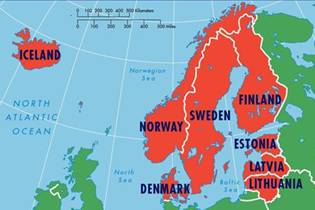
By Dr. Stasys Backaitis
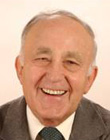 Conference on U.S.-Nordic-Baltic Cooperation:
Conference on U.S.-Nordic-Baltic Cooperation:Shaping the U.S.-European Agenda
The conference provided an overview by U.S. and European researchers and political experts on the importance, need and benefits of a close U.S. collaboration with the Nordic-Baltic region. The collaboration would facilitate building a wider and more secure Europe, reinforcing U.S. attention to transatlantic engagement, and achieving a more constructive dialog with Russia leading to democratization of its society. The conference took place on Friday, May 4, 2012, at The Paul H. Nitze School of Advanced International Studies of the John Hopkins University, Washington, D.C.
The agenda included:
|
Opening remarks. Kurt Volker, Senior Fellow, Center for Transatlantic Relations |
|
|
|
|
|
Panel Discussion |
|
|
|
|
|
Panel Discussion |
|
|
Panel Discussion |
|
|
Concluding Remarks Reception at the Lithuanian Embassy and Remarks by James Townsend, Deputy Assistant Secretary of Defense for European and NATO Policy |
This summary does not intend to deal with every specific issue addressed in this conference. Since many of the issues covered by the speakers and discussers overlapped, it would be of little value to repeat them in this summary on an author to author basis. Rather, the summary is intended to highlight the issues raised and provide the readers the general direction of the topics presented. Details of the issues addressed may be found in the Center for Transatlantic Relations publication entitled “Nordic-Baltic-American Cooperation: Shaping the U.S.-European Agenda”, John Hopkins University, Paul H. Nitze School of Advanced International Studies, May 4, 2012, Kurt Volker and Ieva Kupce, Editors.
Need for more attention towards the relationship between the United States (U.S.) and the democracies of the Nordic- Baltic Region (NB8)
The conference highlighted the need for more attention towards the relationship between the United States (U.S.) and the democracies of the Nordic- Baltic Region. Encompassing Denmark, Estonia, Finland, Iceland, Latvia, Lithuania, Norway and Sweden, the Nordic-Baltic countries (NB8) are remarkable for their economic health, their promotion of democracy, respect for human rights and the rule of law, their contribution to international security and peacekeeping operations beyond their borders, in spite of the on-going economic crisis in the EU. The values and the vision of the NB8 countries to strive and promote these policies make them valuable allies to the United States. In spite of a changing globalized world and shifting power centers, a strong transatlantic link remains indispensable for enhancing common principles and values within the Euro-Atlantic area in general, and particularly valuable and example setting between the U.S. and the NB8.
While there is some disappointment in the U.S. over Europe’s difficulties to cope effectively with the economic crisis and being an effective security partner, the NB8 nations stand out uniquely as a stable, responsible and dynamic region of Europe. The region also shows that democracy still works, that a positive onward vision of the free world is possible, and that there are still important challenges ahead for the transatlantic institutions. The conference explored how the NB8 region and the U.S. can be engaged in and cooperate to shape the broader transatlantic agenda in a positive direction.
The topics in the conference explored the vision the Nordic Baltic countries together with the U.S. might bring to the table and cooperate to shape the broader transatlantic agenda for common good and security. The conference organizers noted that concrete contributions as a result of such cooperation, in line with the EU and the NATO agendas, can be made in a number of areas such as:
- Continue to promote a Europe whole, free and at peace,
- Help aspiring European nations to join the NATO and EU
- Regional integration to attain higher levels of security than could be possible as a disparate collection of individual states and policies
- The relationship with Russia
- Energy and Cyber security
- U.S engagement with Europe
NB8 region has found ways to produce unprecedented security and stability
At a time when a larger part of the Euro-Atlantic community struggles to determine how it should address and resolve its financial and political difficulties, the NB8 region has found ways to produce unprecedented security and stability. Unlike their older EU counterparts, the Nordic and the Baltic countries have shown willingness to reform, to cooperate and to integrate where necessary. Their example of addressing together the arising challenges is a good example to the rest of the EU members on how to solve their current difficulties, leading to a Europe that is whole, free and at peace. .
The Baltic states, Norway and Finland, bordering Russia, have a direct interest and valuable perspective on living with Russia as a neighbor and managing with it security, energy and environmental issues. This provides them a better in-depth understanding and ability to interpret linkages between Russia’s authoritarian system and its external behavior. The NB8 states cannot change Russia on their own, but they can contribute to better formulated and more coherent EU, NATO and U.S. policies toward Russia.
The Baltic states, being particularly energy resources poor, stand out as models for handling complicated and intertwined energy issues with Russia while also reducing their dependency on Russia’s supplies. There is a concerted effort by all NB8 states to move towards integrated energy security by interconnecting their energy generating systems, cooperation in the development of alternative resources, and the construction of a common regional energy market. The region’s move towards greater energy security and sustainability is a good policy model to both the EU and NATO.
In view of the new U.S. Defense Policy Guidance of January 2012, in which the U.S. intends to reduce its military presence in Europe, Washington promised as compensation rotation of U.S. based brigade size forces to Europe to participate in multinational and NATO led training and military exercises. These rotations should be structured to maximize U.S-Nordic-Baltic military engagements including the use of training facilities on both sides of the Atlantic. By the use of trips across the Atlantic, the Nordic-Baltics would leverage state of the art training facilities in the United States and Canada and would enhance their readiness to undertake expeditionary operations throughout the entire NATO nordic region. Active and increasing participation by NB8 in various NATO training operations both at combat and command as well as planning levels, offer to the U.S a value model on the need to sustain a strong transatlantic engagement.
While there can be no security guarantee to the NB8 region without the U.S., there is also no sustainability of a U.S. role in the NorthAtlantic-Baltic and Central European regions without participation and contribution by the Nordic-Baltic countries. The United States needs Europe and thereby NATO, as much as Europe needs the United States as well as NATO. Transatlantic solidarity is essential to support and promote global trade, economic development, security and stability in an increasingly unpredictable world. The interdependence is best reflected in common political objectives, such as to assure a level playing field through unique transatlantic solidarity embodied by NATO. The Alliance’s new focus on partnerships at the Chicago NATO summit is in recognition of global security interdependence.
NATO and EU seem to share similar objectives in energy diversification of supplies, working toward creation of identical infrastructures and interconnectivity, response to emergencies, assistance to third countries , etc. Shale gas has been and will be a game changer in the foreseeable future. It is breaking Russia’s stranglehold on supplies to Europe. Furthermore, the developing interconnectivity of gas and electricity resources and competition in the energy market within the Nordic–Baltic region is diminishing GAZPROM’s power of monopoly. Focusing on diversification of supplies, attaining diminished vulnerability, and building a permanent framework for reduction of short and long term energy security risks are activities bringing greatest added value to energy security. This will be beneficial for both the EU and NATO, because it will make them much stronger in dealing with possible future energy crisis, and projecting stability and sustainability in their respective areas of operation. Effective NB8 cooperation supported by U.S. in the establishment of NATO Energy Security Center of Excellence in Lithuania represents a window of opportunity for attaining these goals.
NB8 countries are leaders in promoting democracy, rule of law, human rights and market based development
The Nordic-Baltic region offers many assets to the transatlantic community. They are leaders in promoting democracy, rule of law, human rights and market based development in Europe and around the world. They are also regarded as honest brokers in many hotspots of the globe. U.S.-Nordic-Baltic cooperation can serve as an important new and stable pillar to the transatlantic community. The shared vision, values, capabilities and collaboration that define the Nordic-Baltics, can be used to reanimate the effort to build a wider and more secure Europe, transatlantic stability, and help to achieve constructive dialog and cooperation with Russia. Such collaboration can also reinforce U.S. commitments to Europe’s regional security requirements and simultaneously drive forward the transatlantic community’s effort to address developing global challenges
During subsequent discussions several comments were made on the futility of the U.S. and EU to accommodate Russia’s adversarial political positions, and continuing human rights and rule of law violations. It was suggested that the West should take a strong and critical stand on these abuses with the Russian government while encouraging and facilitating developments of respect for human rights, rule of law and governance by the people through democratic institutions. While some comments indicated that the U.S. and EU currently are not in a good position to challenge Russia because of critical access to Afghanistan, others noted that Russia needs NATO presence in Afghanistan as means to reduce its vulnerability to Muslim extremism. In this regard the United States and the Nordic-Baltics should leverage their capacities and experience in a way to deepen their engagement with the Russian people and the state. Shared concerns in the Baltic Sea region such as environment protection, maritime safety, land and air transportation, could serve as platforms of common interest. Properly constructed, U.S.and NB8 cooperation could become a positive reinforcement of the insecurities encountered in the EU-U.S. transatlantic partnership. U.S.-Nordic–Baltic cooperation will also be a positive inducement to the U.S. to reinforce its commitment to maintain strong transatlantic ties as means of maintaining stability in the adjoining part of the world with minimal expense and effort.
Stan Backaitis
05/25/12
United Nordic-Baltic region will ensure economic stability and energy security
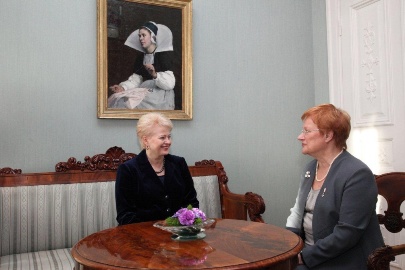
Saturday, October 29, Helsinki - President Dalia Grybauskaitė, currently on a working visit in Helsinki, met with the President of Finland, Tarja Halonen, to discuss Nordic-Baltic cooperation issues, Press Service of the President reports.
This year Finland coordinates the Nordic-Baltic Eight (NB8) cooperation with Lithuania taking over these duties next year. Lithuania and the other Baltic and Nordic countries cooperate actively in advocating the interests of the region in the EU, NATO, OSCE, and other international organizations.
“Joint efforts to strengthen the security of the region’s borders, ensure its economic stability and energy security will help create general well-being and advance progress in the Baltic-Nordic area,” the President said.
The President noted that the deepening of security cooperation was among next year’s top priorities, including border control of the Nordic and Baltic countries, closer interaction on the Baltic Sea environmental issues as well as in cyber and energy security, using to the full extent the possibilities offered by the Vilnius-based Energy Security Center.
The President underlined that the Nordic-Baltic region – one of the most rapidly developing regions in the European Union – was a dynamic driving force to advance economic stability, growth, responsible fiscal policies, innovations, and progress.
The Nordic Baltic region aspires to be among the first to put a single information space and digital market in place for accelerating electronic settlements, information exchange and access to information.
The presidents of Lithuania and Finland emphasized that keeping the Baltic Sea clean and secure for the future generations was a key commitment for all the Baltic Sea rim countries. Specific measures binding for all the nations around the Baltic Sea were set forth at the Baltic Sea Action summit held in Helsinki last year.
Tagged as: Dalia Grybauskaitė, Nordic-Baltic cooperation, Tarja Halonen
JAV-Šiaurės-Baltijos valstybių bendradarbiavimas formuojant JAV-Europos kooperavimo darbotvarkę
Dr. Stasys Backaitis, P.E., SAE Fellow
- Bookmark :
- Digg
- del.icio.us
- Stumbleupon
- Redit it
- Posted by - (2) Comment
 |
VilNews is in Azerbaijan
|
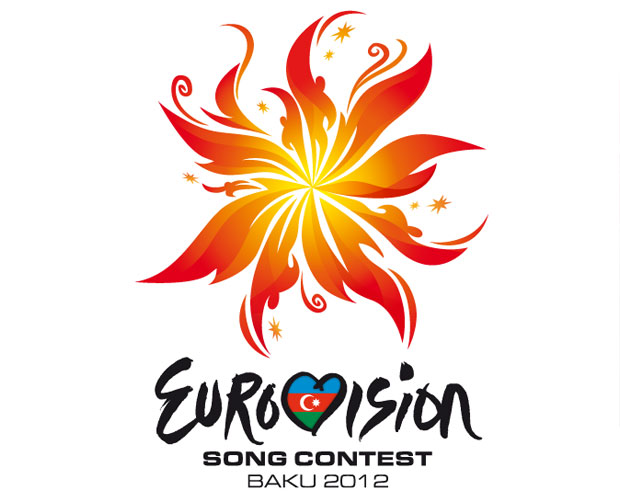
By Arvydas Arnasius
Azerbaijan is neither Europe nor Asia and this country has an incredible tangle of contradictions and contrasts. It’s fascinating nexus of ancient historical empires going back centuries ago.
Until the 20th century the ancient term Azerbaijan applies largely to ethnical territory centered on Tabriz and Ardabil in Iran. Over the last two thousand years it’s not just a country name and rules that have changed but also its religion, language and its ethnicity. Having spent most of that time straddling its territories of competing empires, understanding this extraordinary saga really requires understanding of the Persian, Arab, Turkish and Russian histories.
Today Azerbaijan is a new and dynamic nation finding its way from the emergencies from war-torn post-Soviet times on petroleum funded explosion of optimism. Surrounded by the semi-desert on the oil rich Caspian Sea, the nation’s cosmopolitan capital – Baku, is a dynamic boom-town, where flashy limousines and mushrooming skyscrapers sweep around the picturesque old town. Yet barely few hours’ drive away there is another reality - entirely different world: timeless villages with their people and soaring high Caucasus mountains.
The Azeri capital is Caucasus largest and most cosmopolitan city. Few cities in the world are as quickly and nowhere else in Caucasus do East and West blend as seamlessly or as chaotically. Beat up Ladas race shiny Mercedes past illuminated stone mansions, shiny glass towers and tatty old Soviet apartment blocks. Fascinating Old City surrounded by the medieval fortress wal I protected by Unesco World Heritage Foundation. The name Baku is derived from the Persian bad cube (city of winds) with the gale force winds coming from the Caspian once or twice a month.

Baku is hosting 2012 Eurovision Song Contest which will be the 57th annual Eurovision Song Contest. It is held in Baku, Azerbaijan, following Azerbaijan's win in the 2011 Contest. The two semi-finals will be held on 22 May and 24 May 2012, and the final on 26 May 2012.Ten countries from each semi-final will qualify for the final and will be joined by Azerbaijan, France, Germany, Italy, Spain and the United Kingdom. Forty-two countries is participating in this event.
The country took this challenge very seriously with the big development project - the venue Baku Crystal Hall in the Azerbaijani capital. On 16 May 2011, it was announced that a special concert complex with 23,000 seats for the 2012 Contest was to be built near National Flag Square in Baku. The foundations were completed on 14 October 2011 and now the hall is completely finished. There is no official information released on the cost involved in developing the infrastructure and the venue yet but, according to experts, they can easily reach over a couple of billion euros.
2012 Eurovision song contest is considered to be a major rehearsal for the Azerbaijan's capital, Baku, plans to bid for the Olympics, with initial studies suggesting that the cost of hosting the 2016 Summer Olympic Games may be $20 billion.
Azerbaijan with its booming capital and strive to be part of Europe accompanied by its people positive attitude and deeply inherited sense of hospitality is standing a good chance winning this Olympic bid and always be enjoyable and highly memorable places to visit.
Key Facts on Azerbaijan
Area: 86,600 sq km.
Capital: Baku
Famous for: Oil, saffron, caviar
Official name: Azarbaycan Respublikasi
Population: 7,830,000




- Bookmark :
- Digg
- del.icio.us
- Stumbleupon
- Redit it
Lithuania is a cultural treasure the world still knows far too little about
- Posted by - (3) Comment
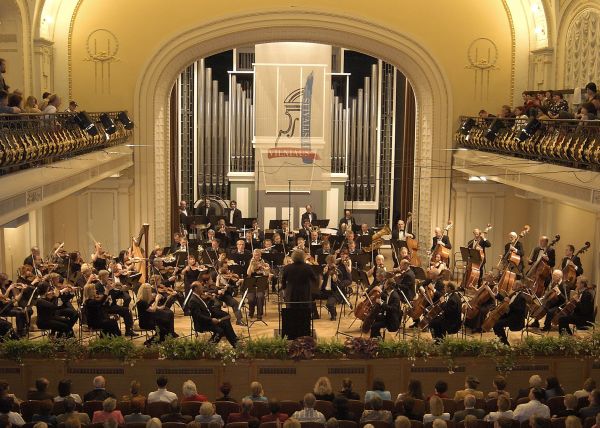
The Lithuania National Symphony Orchestra playing in the National Philharmonic Hall, Vilnius.
Conductor: Professor Juozas Domorkas. Photo: Michailo Raškovskio
Far too few people outside Lithuania know what a tremendous treasure of culture this country represents! Today Lithuanian art is not only flourishing at home but is also gaining recognition internationally. Though not every poster tells that a nightingale soprano, a graceful ballerina, or a divine cello player comes from Lithuania, the probability that you have just enjoyed a concert of a Lithuanian artist is great, whether it be New York, London, Berlin, or Vilnius.
Vilnius, a city with a population slightly more than half a million, is packed with art galleries and is full of posters inviting you to exhibitions, concerts and plays, both in traditional galleries and concert halls, but also in less traditional venues. The old town itself is like a spacious and cosy gallery of Baroque architecture.
And it is not only Vilnius that can boast of a rich cultural life. Nearly every bigger town has a professional theatre, concert hall and a tradition of regularly attending cultural events. Though the Lithuanian summer is short, the summer calendar is packed with festivals going on all around Lithuania.
For centuries Lithuania has been home to those of Slavic, Jewish, Karaite, and Prussian descent, along with those of other nations. This multiculturalism, along with the figurative expression in literature, theatre, cinema and fine arts, has become a hallmark of Lithuanian art. The link between history and the present is the feature pointed out most often by lovers of Lithuanian art in neighbouring European countries and more distant Asian countries...
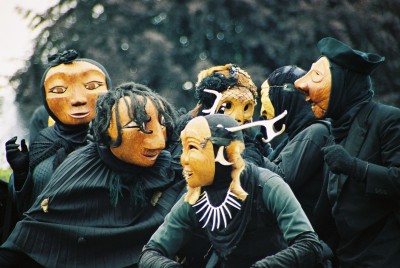
“Užgavėnės” is a Lithuanian festivalthat takes place during the seventh week before Easter (Ash Wednesday). Its name in English means “the time before Lent”. The celebration corresponds to Roman Catholic holiday traditions in other parts of the world, such as Mardi Gras, Shrove Tuesday, and Carneval.
Europe is discovering Lithuania through its culture. Lithuanian art is not only flourishing in Lithuania but is also gaining recognition internationally. Though not every poster tells that a nightingale soprano, a graceful ballerina, or a divine cello player comes from Lithuania, the probability that you have just enjoyed a concert of a Lithuanian artist is great, whether it be New York, London, Berlin, or Vilnius.
Vilnius, a city with a population slightly more than half a million, is packed with art galleries and is full of posters inviting you to exhibitions, concerts and plays, both in traditional galleries and concert halls, but also in less traditional venues. The old town itself is like a spacious and cozy gallery of Baroque architecture.
It is not only Vilnius that can boast of a rich cultural life, but nearly every bigger town has a professional theatre, concert hall and a tradition of regularly attending cultural events. Though the Lithuanian summer is short, the summer calendar is packed with festivals going on all around Lithuania.
For centuries Lithuania has been home to those of Slavic, Jewish, Karaite, and Prussian descent, along with those of other nations. This multiculturalism, along with the figurative expression in literature, theatre, cinema and fine arts, has become a hallmark of Lithuanian art. The link between history and the present is the feature pointed out most often by lovers of Lithuanian art in neighboring European countries and more distant Asian countries. They also point to the tolerance and openness of Lithuania culture towards cultures of other nations.
Literature
Lithuanians are well-read nation. Enthusiastic participation in international book fairs has changed the attitude of foreign publishers towards Lithuanians writers and also of Lithuanians themselves. Earlier the leading role in Lithuanian literature was played by poetry, though international book fairs brought a revelation that should show more interest in and be proud of the modern prose by talented Lithuanian women writers like Jurga Ivanauskaitė, Renata Šerelytė, Vanda Juknaitė and gifted contemporary authors such as Sigitas Parulskis and Marius Ivaškevičius. The most pleasing fact is that despite global computerization, both translations and books by Lithuanian authors still top gift lists, and that the Baltic book fair in Vilnius is attended by nearly every second Lithuanian family.
Theatre
Meanwhile Lithuanian theatre could be called the most intriguing part of the general development of theatre happening worldwide. Moreover, stage directors from Lithuania have a huge following in many parts of the world: Eimuntas Nekrošius is a favorite of Italian drama ad opera theatres, Rimas Tuminas is beloved in the Nordic countries, and the festivals in Avignon and Edinburgh cannot be imagined without Oskaras Koršunovas. Lithuanian theatre performances are always a big event in Russia, and the number of Lithuanian theatre fans is rapidly growing in France, Germany, Italy, Spain, South Korea, Hong Kong, USA, Mexico, Canada, Columbia, Argentina and Brazil.
Opera star Violeta Urmana performs at famous theatres and concert halls all over the world, but few know that this top level soprano is Lithuanian. Similarly successful are other Lithuanian musicians, traveling and performing in concert halls all over the world, and winning awards at international festivals. They are performing not only popular or modern world classics, but also the music by famous Lithuanian composers – Onutė Narbutaitė, Raminta Šerkšnytė, Bronius Kutavičius, Osvaldas Balakauskas, Algirdas Martinaitis, Mindaugas Urbaitis and Anatolijus Šenderovas.
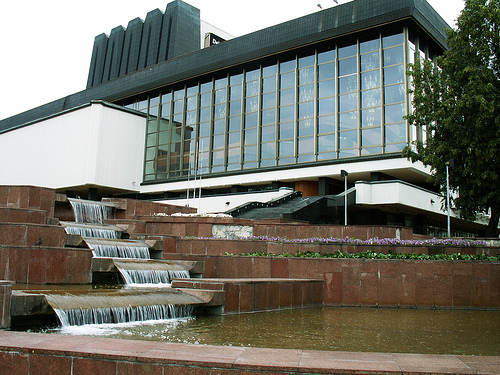
The Lithuanian National Opera and Ballet Theatre invites you to the performance of the 2011 Season . Keeping in mind that all tickets are usually sold out before the performance, we recommend you to book tickets beforehand.
Fine arts
Today exhibition halls show the pieces of fine arts painted a few decades ago, and which is referred to as „silent modernism“. It contributed to the maturity of the artists of the modern generation who freely communicate with the audience through their installations, performances and video art not only in the Contemporary Art Center in Vilnius, but also in Paris, Venice and New York. Pieces of art by Eglė Rakauskaitė, Paulius and Svajonė Stanikas, Deimantas Narkevičius, and Gediminas and Nomeda Urbonas, which have reached international audiences, provided a possibility for Lithuanians themselves to realize the unique nature of their art.
Every encyclopedia or reference book on art has an entry about Fluxus. But few of them mention that this influential movement was initiated by Lithuanian Jurgis Mačiūnas.
Who is Jurgis MAČIŪNAS?
Jurgis Mačiūnas, internationally known as George Maciunas, the father of Fluxus, (November 8, 1931- May 9, 1978) was born in Kaunas, Lithuania. As a young man he moved to Germany to escape the Soviet occupation of Lithuania.
What is FLUXUS?
Fluxus (from „to flow“) is an art movement noted for the blending of different artistic disciplines, primarily visual art, but also music and literature.
Fluxus included a strong current of anti-commercialism disparaging the conventional market-driven art world in favor of an artist-centered creative practice.
Among its early associates were Joseph Beuys, Dick Higgins, Nam June Paik and Yoko Ono.
Fluxus has also been compared to Dada and aspects of Pop Art and is seen as the starting point of mail art.
Paintings by Dalia Kasčiūnaitė, Ričardas Vaitiekūnas, Rūta Katiliūtė, Algis Griškevičius, Vilmantas Marcinkevičius, slupture Mindaugas Navakas, and many others are exquisite pieces in many foreign, private and even royal collections of art.
Cinema
Though Lithuanian cinema directors are yet not as known as Danish, French or Italian masters, they still have their audience, who appreciate Lithuanian cinema for deep insight into the human being and its poetic view towards life. Lithuanian short films by Giedrė Beinoriūtė, Ramūnas Greičius, Inesa Kurklietytė and documentaries by Audrius Stonys, Valdas Navasaitis and Arūnas Matelis have garnered international awards and numerous international film festivals.
Lithuanian films have also found their audience in Cannes, New York, Tokyo with cinema fans having already gotten acquainted with the names of Šarūnas Bartas, Algimantas Puipa, Janina Lapinskaitė and Kristijonas Vildžiūnas.
Jonas Mekas (born December 23, 1922 in the village of Semeniškiai) is a Lithuanian filmmaker, writer, and curator who has often been called “the godfather of American avant-garde cinema”. He was the founder of the Anthology Film Archives, The Film Makers Cooperative and Film Culture magazine. He wrote film reviews for The Village Voice since 1958. He was heavily involved with artists such as Andy Warhol, Nico, Yoko Ono, John Lennon, Salvador Dali and fellow Lithuanian George Maciunas.
During WWII, Mekas lived in displaced persons camps before emigrating to the United States with his brother, Adolfas Mekas, in 1949.
Though his narrative films and documentaries are still highly regarded, he is best known for his diary films, such as Walden (1969), Lost, Lost, Lost (1975), Reminiscences of a Voyage to Lithuania (1972), and Zefiro Torna (1992). In 2001, he released a five-hour long diary film entitled As I Was Moving Ahead, Occasionally I Saw Brief Glimpses of Beauty, assembled by hand from an archive of fifty years worth of recordings of his life.
He is also a highly regarded poet in Lithuania.
Whatever it is – a movie, a book presentation or a theatre performance – the label “LITHUANIA” means an opportunity to experience and universally enriching.
Source: http://lietuva.lt/en/culture
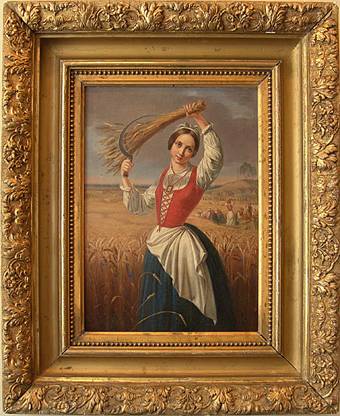
The painting “Harvest Girl” (Pjovėja) from 1844 by Kanutas Ruseckas (1800-1860) is probably the most popular painting in the Vilnius Picture Gallery - Lietuvos dailės muziejos.
- Bookmark :
- Digg
- del.icio.us
- Stumbleupon
- Redit it
Adomas Varnas – artist and banknote designer
- Posted by - (2) Comment

Adomas
Varnas (1879-1979).
“Artist
and beggar”, 1906-1908, oil on canvas, 115x80.
Čiurlionis
National Art Museum
By Frank Passic, Albion, Michigan, USA
A few weeks ago in Vilnews there was an article about Lithuanian artist Adomas Varnas (1879-1979), which included an illustration of his 1953 masterpiece entitled “The Coronation of King Mindaugas.” Varnas’ lifespan far surpassed those of his counterparts, and his biography is extensive. Varnas was co-founder and the first president (1920) of the Association of Creative Artists, and helped organize Lithuanian art schools and galleries. He became well known for his collection of ethnographic material, particularly the wayside crosses. He also designed various Lithuanian stamps and banknotes.
Varnas escaped to the West during the summer of 1944, and in 1949 settled in Chicago, Illinois. Despite his old age, he remained active until the time of his death. He celebrated his upcoming 100th birthday on December 8, 1978 and was able to speak briefly at a banquet held in his honor in Chicago at the time.
In a bit of irony, the Lithuanian numismatist Dr. Aleksandras Rackus (1893-1965) wrote in 1949:
“Adomas Varnas, the famous Lithuanian artist…is coming to the U.S. He fled from the Bolsheviks in his old age and lived as a refugee in a D.P. camp in Germany. He is more than 70 years old and malnutrition made him physically weak. Stamp collectors undoubtedly will want his autograph and other favors, but they should remember that he won’t live very long, so try to reciprocate. At least buy from him a painting.”
Not only did Varnas live a long life of 100 years, he lived for more than thirty years after Rackus’ statement! Rackus died in 1965.
The focus of this article concerns Varnas’ role in designing the so-called permanent banknotes of the Bank of Lithuania, dated November 16, 1922. These replaced the so-called temporary notes that were dated September 10, 1922 and printed in Berlin. The Bank of Lithuania was still in the process of being organized in September, 1922, and was located on the first floor of the Finance Ministry building. The building was located at the corner of Donelaitis and Maironis Sts. in Kaunas.

The
Bank of Lithuania was first headquartered in the Lithuanian Finance
Ministry
building, located at the corner of Donelaitis and
Maironis
Sts. in Kaunas, in the fall of 1922.
The permanent notes were printed at the firm of Andreas Haase in Prague, Czechoslovakia. The designs on the smaller denominations in various centas values were produced mechanically by the printing firm. Those notes beginning with the denomination of 1 litas and higher were specifically designed by Varnas. Research by collector John Glynn and published in The Knight in 1984 3 reveals some intriguing details concerning Varnas’ role in the banknote process.
When Varnas was informed by Lithuanian Finance Minister Vytautas Petrulis in 1922 that he was assigned to supervise the printing of the new banknotes, he was given only twenty-four hours to pack his luggage and board the train to Prague. At the train station, Petrulis gave Varnas his ticket and a sealed envelope in which the artist thought were the instructions about the printing of the notes.
During the train journey, Varnas opened the envelope to become familiar with the instructions the government had outlined for the job. Neither the government nor Varnas had any say on the type of paper, ink, lettering, or printing which was to be used. Varnas became so angry with the arrangement that he almost turned back to Kaunas where he had caught the train. He changed his mind about resigning however as he felt many people would be angered by such a move.
When Varnas arrived at the printing plant, the production of the minor centas denominations was already in progress. There were three shifts working around the clock, and to Varnas’ surprise, the centas designs had already been formulated and engraved by the printers. This left only the various litas denominations for Varnas to work on.
The work shifts were broken into three groups. Two shifts were supervised by two Lithuanian Finance Ministry officials, with Varnas working the third shift. He would sometimes work double shifts in order to work on the designs. All the drawing and assembly work was done at night between 10 pm and 2 am, and the printing firm was on a strict timetable. Once a design was prepared by Varnas, he was unable to change it, even if he was not satisfied with it. This happened once as Varnas tried to hold up a printing project in order to improve the Vytis emblem, but because of the tight schedule he had to keep the original design.
Each note design consisted of two parts: 1) a screen background with two interlacing security designs created mechanically, and 2) the top artistic theme design drawn by hand. Varnas inserted a secret mark in his designs so that counterfeit notes could be detected. He included a triangle in one design, an elongated slot in another, and so forth.
The Bank of Lithuania was very pleased with the work of the printing firm. Bank of Lithuania governor Vladas Jurgutis showed his appreciation by awarding the workforce a week’s salary as a Christmas bonus. Varnas remained in Prague for a total of fourteen months. Twelve months were spent on the printing and engraving assignment, while the other two were for a vacation before returning to Kaunas. Varnas was paid 15,000 litai (U.S. $1,500) for the assignment.

The text on the face of the permanent banknote series translates, “Bank of Lithuania, Kaunas, November 16, 1922, Bank of Lithuania. XX Litas. One Litas contains 0.150462 grams of pure gold.” Based on the gold standard, the litas at the time was worth U.S. 10¢. Also contained on the face are the signatures of the officials of the Bank of Lithuania for the denominations 2 litas and higher: “V. Jurgutis, A. Prusas, P. Grajauskas, J. Paknys, and Julius Kaupas.” The various centas denominations and the 1 litas note were ordered by the Finance Ministry before the Bank of Lithuania was organized, and so contain Finance Ministry signatures. In addition to the denomination designations, the backs of the 1922 series carry the warning which translates “Counterfeiting Banknotes is Punishable by Law.”
Each denomination has its own designs and historical images associated with it, and these will be discussed in future articles. Our specific focus for this article however, is the 50 litas note (Pick-19) designed by Adomas Varnas. It is illustrated here. The note measures 150 x 78 mm. with the watermark in the paper consisting of ovals. This is one of the most colorful and beautiful notes of the 1922 permanent series. Major colors include green, aqua, and yellowish-brown. The note is decorated throughout with various Lithuanian folk motifs. At the time it was placed into circulation in March, 1923, it had a face value of U.S. $5.00. It is known only with a prefix serial letter of A. The serial numbers are printed in red ink. This note was withdrawn from circulation when a new 50 litas note was issued in November 1928.
The face of the note features the coats-of-arms of Lithuania’s three major cities: Kaunas, Vilnius, and Klaipeda. As an assertion of territorial and national integrity, Lithuania made several references to Polish-occupied Vilnius on its banknotes. In addition, the port city of Klaipeda was still in the hands of the Allied Powers when this note was dated (1922), until the insurrection of January, 1923 brought the city and environs into Lithuanian hands. On the left the arms of Kaunas depicts a wild ox with a cross between its horns. The arms of Vilnius depicts St. Christopher carrying the baby Jesus. The arms of Klaipeda, known as Memel in German, depicts a fortified castle with a small boat resting in the water below.
On the right portion of the face is the image of Grand Duke Gediminas, founder of the capital city of Vilnius. A Caduceus emblem (snakes) representing commerce appears in the center. The back of the note displays an intricate ornate design which forms a huge Columns of Gediminas emblem. In the center can be seen the Hill of Gediminas, the Cathedral of Vilnius, and the nearby Bell Tower.
While studying the details of this 50 litas note, this writer became intrigued by the image of Gediminas found on the face. “Where have I seen this image before?,” I thought to myself. I looked through the 1921 “Lietuvos Albumas” book 4 which contained the photographs of prominent Lithuanians during that period, and discovered something quite incredible. Based upon the photo of Adomas Varnas in that book, I surmise that Adomas Varnas used his own facial image to portray Grand Duke Gediminas on the 50 litas note!
Pictured here for our readers is a flipped-image of Varnas facing left, and next to it the image of Grand Duke Gediminas on the 1922 50 litas note. Compare the two images carefully. I conclude this article by asking our readers: Did he, or didn’t he? You decide.
|
|
|
Pictured
here for our readers is a flipped-image of Varnas facing left, and next to it
the image of Grand Duke Gediminas
on
the 1922 50 litas note. Compare the two images carefully. I conclude this
article by asking our readers:
Did
he, or didn’t he? You decide.
FOOTNOTES
Dr. Aleksandras M. Rackus. “Adomas Varnas.” American-Lithuanian Philatelic Specialist, June, 1949, pg. 18.
Karys, Jonas. Nepriklausomos Lietuvos Pinigai, (New York, Aukeslis, 1953), pg. 139.
John Glynn. “Adomas Varnas: Artist, Banknote Designer.” The Knight, August-September 1984, pp. 1, 2, 4.
Lietuvos Albumas. Berlin: Otto Elsner, 1921.
- Bookmark :
- Digg
- del.icio.us
- Stumbleupon
- Redit it
A weekend of books in Vilnius – once again
- Posted by - (1) Comment

Text and photos: Diana Koval
An annual cultural refreshment weekend for all those who cannot imagine their life without books finally happened and as always it was fabulous. Vilnius International Book Fair for the 13th time opened its doors to the numerous visitors from all over the country. Last year there were about 60 thousands of them, and about the same amount of guests are expected to visit Litexpo exhibition center during this last weekend of February.
What may one find here? There are 5 exhibition halls, creative studios, workshops and discussion clubs. Also, an enormous variety of books and magazines on different subjects from science and technology to art albums and children literature for a reasonable price. Every year thousands of guests are coming here looking for favorite novels, dictionaries, textbooks or any other books, which are presented by country’s major publishing houses as well as independent bookstores and vintage or collectable rare book sellers.
Among the highlights of the event were discussion forums with famous Lithuanian writers, scholars and politicians as well. On a Friday evening an American writer of Lithuanian ancestry Ruta Sepetys visited the Fair as an honorary guest of the event. She discussed her debut novel Between Shades of Grey and her own literary experiences which she gained in Lithuania during the process of writing. Among the writers there also was the former president Valdas Adamkus, who was signing his book “Last Cadence”.
On the second floor there was an exhibition of artwork by deceased Lithuanian writer and artist Jurga Ivanauskaite, which was made in early 90’s during her visits to India and Nepal. Also some posters from Soviet era and paintings from contemporary Lithuanian artists were portrayed at the Book Fair as well.
The Book Fair still gives people that nice and memorable experience. It is an enjoyable event and another opportunity to meet old long lost people, renew contacts, or simply meet with friends and family. This is not a Frankfurt Buchmesse type of book fair, less busy but still very much enjoyable and interesting event, which attracts many visitors and aims to attract even more guests from all over the Baltic countries year by year. In a digital book era the destiny of traditional book may be questionable, but this time International Book Fair in Vilnius has proved that books are still popular and important part of everyday life.
- Bookmark :
- Digg
- del.icio.us
- Stumbleupon
- Redit it
Vilnius wins with cozy atmosphere
- Posted by - (0) Comment
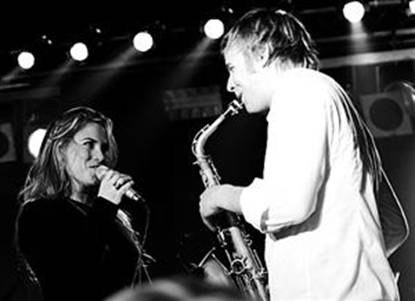
Recently old factory places were resourcefully adapted into clubs.
One of the most famous is "Loftas", where the Parov Stelar
Band (above) is among the many visiting artists.
Despite the clutter of local and international cultural happenings, openings, exhibitions and art workshops, when you think that 24 hours is too short to attend all events, Vilnius still has a nice and rich night life. Not only can you taste the best Japanese, Chinese, Indian and Mexican cuisines but you may enjoy gourmanic kitchens such as Argentinean, Italian, Spanish, Russian, Polynesian, Georgian, Armenian, Thai, German or French.
To try the "cepelinai" or "kugelis" of a Lithuanian national kitchen is a must. Since Lithuanian national dishes are quite heavy, digestive work can be done best by the local beer of big famous breweries or just tasty 'life' beer of the small local beer makers. If you prefer wine and jazz, Vilnius will invite you to lots of cozy wineries, whose numbers have lately grown 'as mushrooms after the rain'.
Not enough adventures? Go and shake your body in a night club! A few years ago, lots of Vilnius dancing clubs caught fire with salsa and bachata. If you more interested in international music, just go to "Pabo Latino" where the best music is played by international and local DJ's, and dance till the sunrise. Various types of life music are always available in "Tamsta Club". Recently old factory places were resourcefully adapted into clubs. One of the most famous is "Loftas". Having nice performances including video-music installations, competitive playing by international and local DJ's and theatrical costume shows – it's always astonishing and crowded.
If you try to compare Vilnius night life with other cities, let’s say to Dubai’s – Vilnius wins with cozy atmosphere, where you can easily meet friends or even find a soulmate (who knows! :) Just come, enjoy and spread the news. We are waiting for you.
Daiva Taliūtė
- Bookmark :
- Digg
- del.icio.us
- Stumbleupon
- Redit it
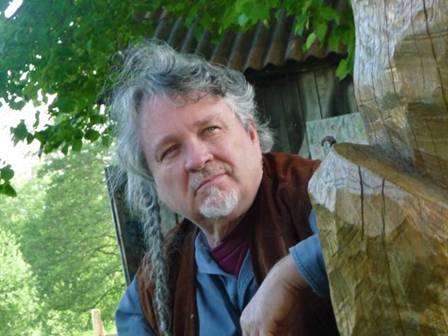
Kerry Shawn Keys
kerrykeys@yahoo.com
Kerry Shawn Keys’ roots are in the Appalachian Mountains (eastern North America). From 1998 to 2000, he taught translation theory and creative composition as a Fulbright Associate Professor at Vilnius University. He has dozens of books to his credit, including translations from Portuguese and Lithuanian, and his own poems informed by rural America and Europe, and Brazil and India (Peace Corps) where he lived for considerable time. His work ranges from theatre-dance pieces to flamenco songs to meditations on the Tao Te Ching, and is often lyrical with intense ontological concerns. Of late, he has been writing prose wonderscripts, and monologues for the stage. A children’s book, The Land of People, received a Lithuanian laureate in 2008 for artwork he co-authored. He performs with the free jazz percussionist and sound-constellation artist, Vladimir Tarasov – Prior Records released their CD in 2006. His most recent book is Transporting, a cloak of rhapsodies (2010). Keys received the Robert H. Winner Memorial Award from the Poetry Society of America in 1992, and in 2005 a National Endowment For The Arts Literature Fellowship. He received a Translation Laureate Award from the Lithuanian Writers Union in 2003. He was a Senior Fulbright Research grantee for African-Brazilian studies, and is a member of the Lithuanian Writers Union and PEN. Selected poems have appeared in Czech, English, and Lithuanian. Currently, Keys is Poet-in-Residence for Summer Literary Seminars Lithuania (SLS Lithuania). He also writes a bi-monthly column, Letter From Vilnius: Eastern/Central Europe and Excursions Elsewhere for Poetry International, San Diego State University.
from the Dais
in memory of Cicero
this is my tongue
this is my left hand
I wasn’t much for speaking
my syllables weren’t pebbles
I was a poet
made to sing
nonetheless
They impaled these here
my body’s vestigial and elsewhere
my right hand’s an organ donation of a kind
I’m trying to say as much as I can
(it’s difficult) before my tongue gets eaten
by the tiniest of birds and the silence of the sun
soon all that remains
will be the sign language of bone
around the imagined palm
and what has been
and will be
written
The Gorge
Grapes feed the gorge,
unforaged wine of the sun’s forge,
and wormy apples, dandelion and feed corn.
And all that grows near or in the gorge,
or pours down from overhead to deluge
the coal-mine Franz Klein darkness,
also feeds the shipwrecked Minotaur
that lies in wait there.
It eats nearly everything
that tumbles and tosses
into the main of its inarticulate throat.
This is what a gorge does best,
turning all that’s green and crimson
into powdery carapace
and the muddy mask of compost.
It will eat you, too, like the papier-mâché pâté
of imprisoned gutturals that spill from your pen.
You won’t get away as the gorgeous, gray heron
I saw one day rising in a pterodactyl-deadly
Icarian arabesque
back into the breath of its own creation.
Disgorged and godlike, and glad to fall victim
to the ferocious rays of the sun.
Sugar
Sugar. Ice-cream...look at all these old people. At the round-table. I want to go. I never thought I’d end up in one of these. Home. O’! cake. Sugar. I don’t want that. Greens, no. Ha, can I take the dessert to my room. Goody. For later. If you don’t finish your meal you can’t...doesn’t mean I can’t. Not my last time, or first. God, how sweet. Sweets. How many years. Chocolate, boy, you always liked chocolate. Goody. God. Death should be fed. Me. And I don’t...when i fell, they gave me sugar. In my blood. Night night sweetheart your nana said. Her last words. Heart. Corason. Kore. Karen. You are still allergic to apples. Sweetheart, take care, the ice-cream will melt. I’ll drink it. A shake. Do you know, sweet, I’ve lost my mind. My memory’s gone. Sure, I remember her name. Her names. Ann. Joy. It’s snowing. Look. Gone. Who’s gone. Me. Him. It’s so hot, snowing, in here. Ice-cream. The window, open. I never thought I would have a picture-window. All those sleigh scenes on the dinner plates. Remember. I remember you. What’s your name. I’m just kidding. It’s cold. But I can look out the window. See the snow. And you can look in. A real picture-window. Pictures on both sides. My hair, I didn’t comb. I want some ice-cream, a cone, a snow-cone. So sweet. I didn’t think I’d live this long. The pain is gone. Remember, I used to wish I was dead. So much pain. Here, have some. Where are you. It’s time for bed. You can stay here. They changed the sheets. It’s so cold. With the window open, are there still pictures on both sides. Sugar sheets. Sweet. Pillows. See my bears. When I fell, it was at the pictures. I remember that. I was leaving. I never left though. I’m here. It’s cold. Sleeping on sugar. Remember the sugar-plum fairy. And the tooth-fairy. You’ve always had a sweet-tooth, too. Did you see the pictures. Both sides. None from below. You can sleep under the bed. Or the pillow with the tooth-fairy. No one will see you. Like snow on TV. There must be a picture from above. The man upstairs. That’s what your father used to say, the man upstairs. Sweet, tuck me in. One more year, and then another. It’s snowing. The ice-cream truck. Can you hear the bells.
Dog
The little bastard was yapping and biting at my pant legs. I took the plastic bag of pampers I was carrying to the dumpster and whacked him over the head. But then I lost my balance and fell on the icy sidewalk into a coma. When I came to, I had the smelly pampers all over and around me. A spiteful dog. He must have torn into the bag and decorated me with them. There he was, under a nearby tree still yapping at me. I picked up a pamper and threw it at him. Then another and another and another and another and another and another and another…finally keeping one for myself as protection. This was the first battle. War was looming. I went back to my flat to develop a strategy. I put the stinking pamper on the table next to my compass and pen and paper. Opening the window for some fresh air, I saw the dog sniffing the pampers. He was wagging his tail as if gloating. Getting my smell I guess. He too was making plans. I would fool him and change my diet – no more dairy products! I put the pamper in the freezer as a souvenir of the first skirmish. A matter of life and death. Purple hearts. For the moment, neither of us had triumphed.
- Bookmark :
- Digg
- del.icio.us
- Stumbleupon
- Redit it
- Posted by - (0) Comment
 |
Ingrid Baronaite Hammoud, Klaipėda:
|
 |
"All things are hidden in their opposites-gain in loss, gift in refusal, honour in humiliation, wealth in poverty, strength in weakness...life in death, victory in defeat, power in powerlessness".. |
 |
"Find a way to be thankful for your troubles, and they can become your blessings." "And you learn...That you really can endure..that you really do have strength..That you really can endure.. and you learn... and you learn... and you learn....with every goodbye you learn." |
 |
"The truth is a brilliant, many-sided diamond." "We see things not as they are, but as we are.." "God turns you from one feeling to another and teaches by means of opposites so that you will have two wings to fly, not one." |
 |
"To see a world in a grain of sand and heaven in a wild flower Hold infinity in the palms of your hand and eternity in an hour.” - William Blake |
 |
"Darkness cannot drive out darkness; only light can do that. Hate cannot drive out hate; only love can do that. When the mirror shows us darkness and hate, we must shine with light and love, in all aspects of our lives.” "My religion is very simple. My religion is kindness." |
- Bookmark :
- Digg
- del.icio.us
- Stumbleupon
- Redit it
- Posted by - (1) Comment
Vilniaus Kamerinis Teatras, October – December:
When Men Played God!
The Story of Anne Frank
A conversation with Alicia Gian, co-director of Kai žmonės vaidino Dievą!
Emily Šaras, Associate Editor
October 21, 22, 23, 28, 29. November 11, 12. December 20. 18:30
Vilniaus Kamerinis Teatras (Vilnius Chamber Theatre)
TICKETS: www.bilietai.lt
Sponsored by the United States Embassy, Vilnius
Anne Frank, the girl who has been the voice for millions of unheard voices from the Holocaust, is being heard in Vilnius for the first time in Lithuania’s history. In a newly adapted script by Mr. Marius Mačiulis, nine of Vilnius Chamber Theatre's actors will tell the story of family, hope, death and most importantly love. Co-Director of the production, Ms. Alicia Gian, hopes for the audience to be emotionally moved by the production, and seeks to inspire viewers to “be moved to action - moved to talk about and act upon social injustices that are occurring in our neighborhoods, cities, countries and world today.” In the words of Anne herself, "How wonderful it is that nobody has to wait a single moment before starting to improve the world" – and the Vilnius Chamber Theatre eagerly anticipates the October 21st premiere of the production.
Although Ms. Gian has called Vilnius her home for the past four years and is serving as the Artistic Director for the Vilnius Chamber Theatre, she is currently completing her Master’s Degree in Directing and Actor Training at the University of Exeter in the United Kingdom. She has won several grants from the United States Embassy in Vilnius for her theatre productions – a Fulbright Grant for her production of Kanarėlė (the story of American singer Peggy Lee) and the prestigious Smith-Mundt Grant for her production of Meilė be akcento (Love Without Accent). This experience in directing the story of Anne Frank in Vilnius, however, marks a new highlight of her career. Ms. Gian recalls her experience reading The Diary of Anne Frank as a 13 year-old girl, and to this day she remembers it as “one of the most memorable and moving literary experiences” of her entire life. “I felt that I was reading the diary of a friend, and now I feel as if I am telling the story of a friend. I am not the only one who has had such an experience.” And she is absolutely right: The Diary of Anne Frank is one of the most widely read books internationally, second only to the Bible, and it is inarguably the most well-known piece of literature about the Holocaust.
The conceptualization of this production began to formulate almost a year and a half ago when Ms. Gian was approached by the American Center at the United States Embassy to direct a Jewish Heritage theatre project, in commemoration of the proclamation of 2011 as the year of Jewish Heritage and Holocaust Remembrance in Lithuania by the Lithuanian Parliament (Seimas). “The idea was to create a piece of theatre that would pay homage to the victims of the Holocaust as well as serve as an educational tool to promote further discourse on the topic of tolerance” says Ms. Gian. “As a person of non-Jewish heritage, I felt that it was very important to choose a play with which I had a very personal connection.”
The most intriguing thing about this production, however, is that the themes behind Ms. Gian’s and Mr. Mačiulis’s realization of Anne Frank’s story is that the work extends into a realm of human rights and compassion, beyond the obvious themes race and tolerance. Ms. Gian notes,
“Anne Frank wrote in her diary, ‘…if we were liberated today, I would go back to school and I'd hope that they would see me as just a girl and not just Jewish.’ I think this is one of the most poignant lines in the entire book. Yes, this is a story about what happened to a group of people who happened to be Jewish. The fierce documentation by the Jewish people of these crimes against humanity has enabled the global community to recognize and confront acts of injustice.” When history is forgotten, it tends to repeat itself. Productions like The Diary of Anne Frank are what I consider to be preventative productions - productions which stay in the social consciousness in order to inspire a sense of social responsibility, so that the subject matter may never be forgotten and never repeated. Within that mindset, our vision is to share this story with as many communities as possible in Lithuania and in the Spring of 2012, the first national tour of "The Diary of Anne Frank" will take place in five different cities across the nation.
Unfortunately, we cannot say that since the Holocaust that genocide has not has not occurred. It has happened recently in places such as Cambodia, North Korea, Tibet, the Darfur conflict in Sudan, and Rwanda to name just a few. It is even happening right now in Somalia. Lithuanians themselves have also been the victims of genocide.”

The title of the production, literally translated as “When Men Played God,” was the brilliant result of a collaboration between the co-directors. “In the beginning stages of rehearsal,” remembers Ms. Gian, “I felt that the play was more of a drama than a tragicomedy and he felt otherwise. I also had reservations about using the word comedy next to the word Holocaust.” But Ms. Gian’s research into the origins of the genre revealed the basis of the tragicocomedia genre, a term defined Roman playwright Plataus as a play in which gods and men or masters and slaves change places. “When Hilter and the Nazi party decided that certain people were worthy of life and others were not,” says Ms. Gian, “and they controlled others on the grounds of race, ethnicity, religion, sexual-orientation, or physical and mental limitations, they assumed the role of God.”
“Also, in more modern interpretations of the word, tragicomedy, it is often described as a play in which laughter is the last human response left to an absurd or despairing fate” says Ms. Gian. “The element of humor in this production is very important. Humor is a survival tactic. The brain actually pauses during laughter, functioning as an automatic stress-management tool. This is the body's way of keeping mental balance. For two years, these people hid in an attic in Nazi-occupied Holland. The stress that they were living in was unimaginable and they used laughter and humor to help each other survive each and every day.”
The Vilnius Chamber Theatre promises to take us on a mental voyage of two hours and thirty minutes into the life of a terror that most of us escaped...to share an important part of history in a powerful and accessible way.
- Bookmark :
- Digg
- del.icio.us
- Stumbleupon
- Redit it
- Posted by - (1) Comment
Reflections from Dainų Šventė
“Funk and dance, not folk song,
is our life, our lifestyle”

Breakdancer executing a one-handed spin to the song Jump
Around by House of Pain in Kalnu Parkas, Vilnius,
on the opening night of Dainų Šventė, 2009
Text: Emily Šaras
Associate Editor
It was a misty and moist afternoon in the summer of 2009, a year that celebrated Vilnius, Lithuania as a European Capital of Culture. Just as eager as I was sleep-deprived, I started my ethnomusicology research project that night by observing the opening Dainų Šventė event. My particular strain of jet lag – the seven-hour difference between Vilnius and Boston – was still a haunting presence, leading me to wander zombie-like throughout the streets of Senamiestis that evening. But even in my undead state, I was on a mission: like the hundreds of Lithuanians gathered in the city center, I had come to the opening night festivities of Dainų Šventė to hear my first taste of Lithuanian dainos (folk music) performed live. A hedgehog in the fog, I sought musical truth to clear out my haze.
By the early evening hours, dozens of benches were already full with an audience of all ages. The concept that these strangers would gather in Katedros Aikštė to unabashedly and publicly sing together astounded me. As a classical singer, I have become accustomed to performing solo on a stage, separated from my audience. Yet these patient Lithuanians sang along to a recording of “Ant Kalno Mūrai,” with lyrics projected on a large video screen like a large, nationalist karaoke party. Was this the authentic Lithuania my grandfather, a refugee during the Soviet Occupation in the late 1930s, had described in the stories he told me when I was a child? Perhaps, I thought, but with some newfangled technology involved. For a moment, I believed in the homogeneity of the spectacle.
Yet before the choirs began to sing for both the live audience and the thousands of Lithuanian viewers glued to their television sets at home, I broke away from the crowd in the event seating area to follow a curious sound that reminded me of home – a saxophone. Keeping an eye on the growing masses behind me, I walked about a hundred yards away from the crowd into Kalnų Parkas, the wooded, hilly area behind the city’s famous cathedral. There, I found the boom-box, the break dance mat, and eleven twenty-somethings jamming to what suddenly sounded so exotic against the folk backdrop: funk music.
The troupe members rotated on and off the mat, contorting their bodies into spinning shapes. They smiled, breathed excitedly and hummed along with the distorted saxophone melody line. Intrigued, I pulled the leader of the troupe aside for an interview. I was quite curious as to why they were dancing to funk under the trees instead of singing at the national festival in the square. Folk music, after all, is defined as the music of the people.
The young man took a pause, and a long drag of his joint before offering me a hit. Disappointed at my refusal (some American I am), he motioned back to growing the crowds and shook his head. Over there, he explained to me, was not the music he identified with. “Funk and dance, not folk song, is our life, our lifestyle…Funk is our music.” Such a simple but poignant statement shocked me. It was only away from all of the media publicity surrounding Capital of Culture 2009 events that I had come into contact with artists my age whose musical identities are on the blurred margins of Lithuanian musical culture. And just like that, he jumped back on the mat and threw his body into a spin.
Pluralism persisted right there in front of me, even on the night all Lithuanians were supposed to come together in unified song. All of a sudden, I understood the night’s haze in a different light: there was beauty in this newfound blur between musical genres. Towards the end of the concert, the orchestra began the finale with a pop song. “Kaip gyveni? Gerai!” (How are you? Great!) sang the audience members as two of them grabbed my hands and shook them in the air. We had never spoken to each other before, and yet all of us were dancing together, sharing in a friendly moment in which even I, the American outsider, felt included and welcomed.
That night in the fog, I threw away my search for the authentic and started to study music that crosses and blurs the borders of society. I could not clearly define the evening’s particular mix of music, but it was clear that the heterogeneity and the haziness were the definitive parts of us all coming together. People from all over the world are connected to the small city of Vilnius, and diversity and pluralism at the core of this country’s ancient history. My experiences that foggy night are reflections of that truth. Music has the power to connect our voices and bring us into musical and emotional harmony with one another. Perhaps this spirit of connection offers us a viewpoint that looks beyond our “norms” to see the value of the music, art, and culture within margins of our community.
- Bookmark :
- Digg
- del.icio.us
- Stumbleupon
- Redit it
VilNews e-magazine is published in Vilnius, Lithuania. Editor-in-Chief: Mr. Aage Myhre. Inquires to the editors: editor@VilNews.com.
Code of Ethics: See Section 2 – about VilNews. VilNews is not responsible for content on external links/web pages.
HOW TO ADVERTISE IN VILNEWS.
All content is copyrighted © 2011. UAB ‘VilNews’.

 Click on the buttons to open and read each of VilNews' 18 sub-sections
Click on the buttons to open and read each of VilNews' 18 sub-sections 




























































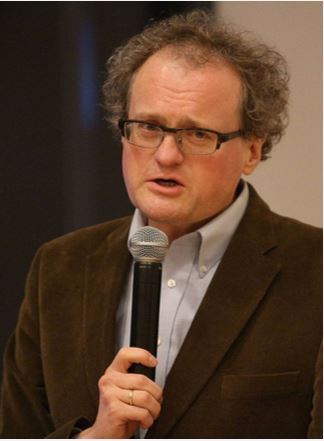
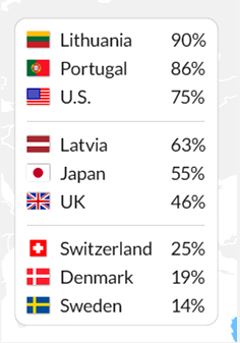
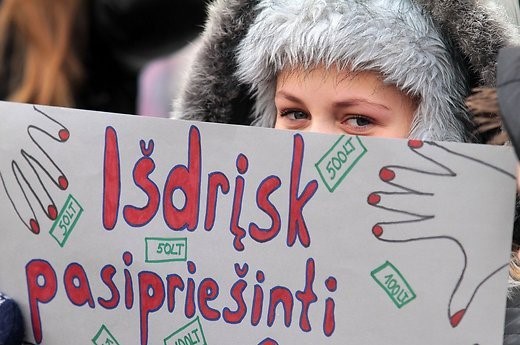


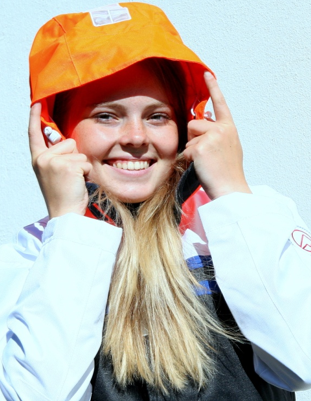
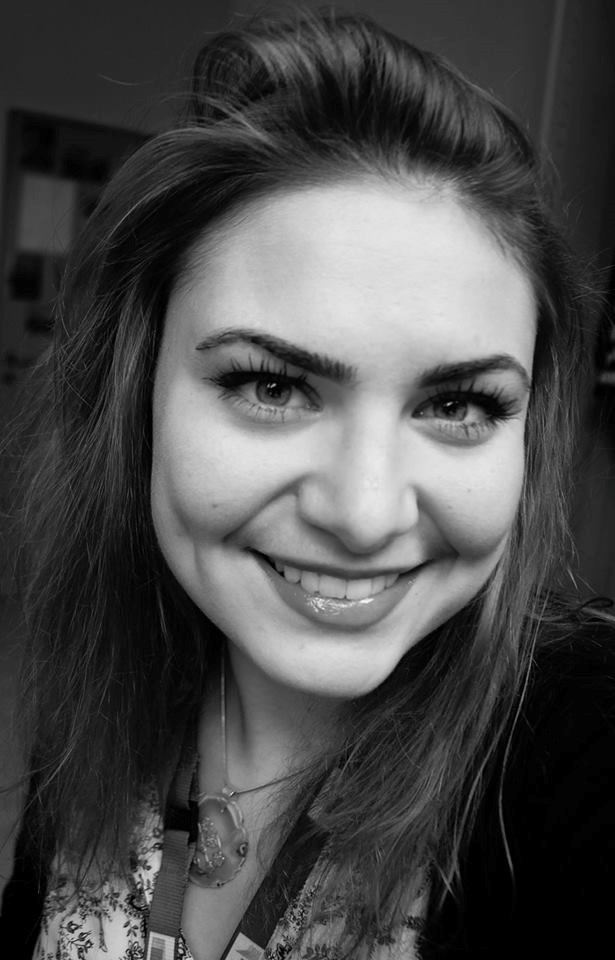
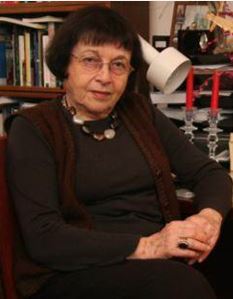
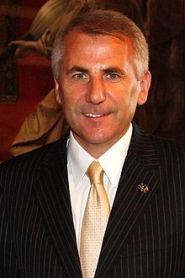
.jpg)
